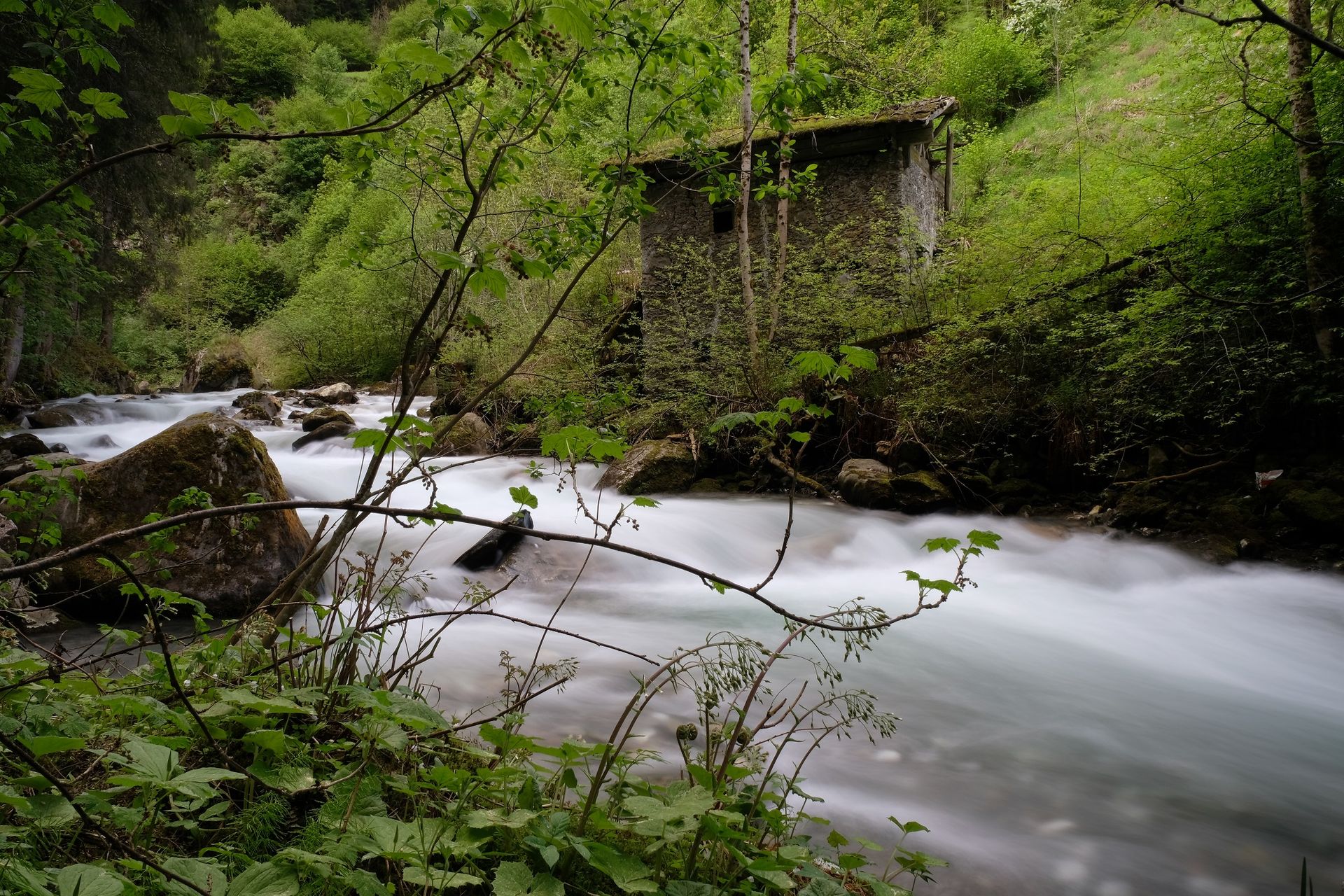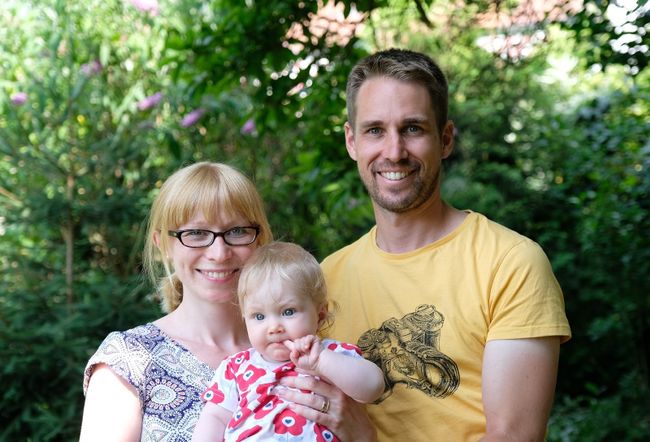The Classic: Langtang Trek
E hatisitsoe: 03.01.2019
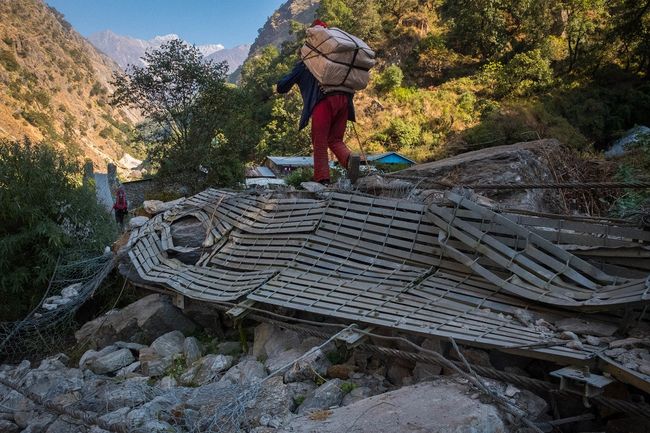
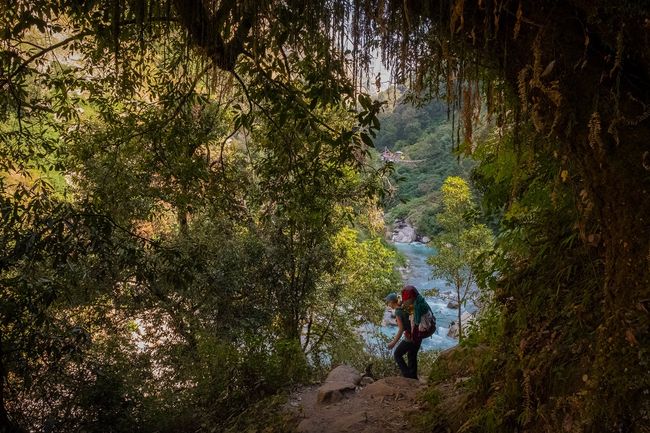
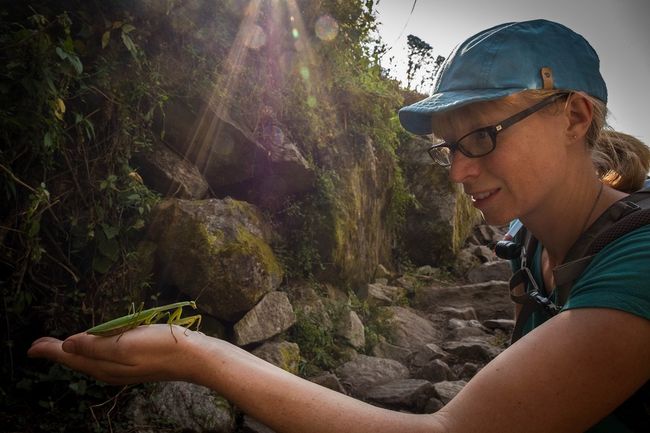
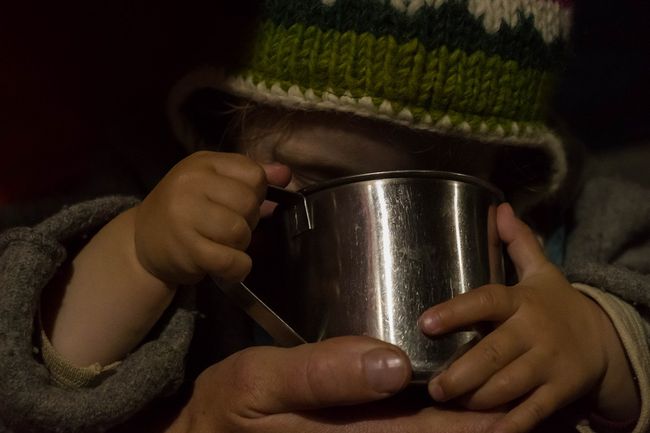
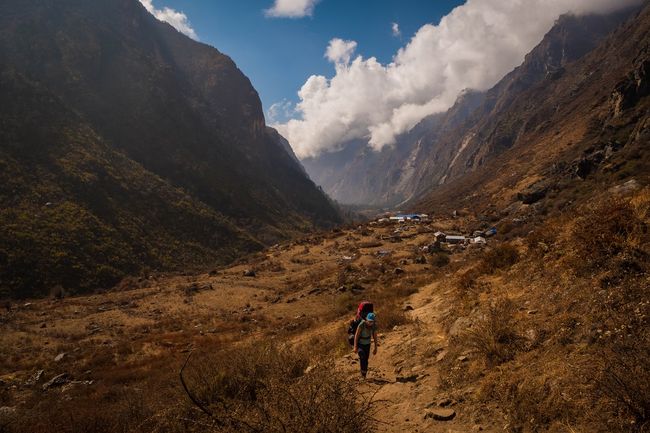
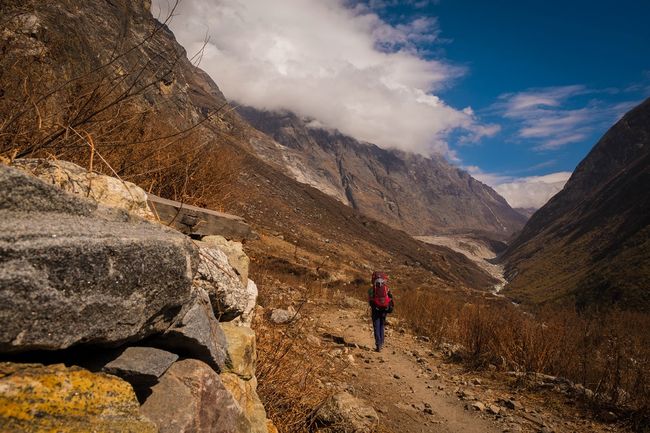
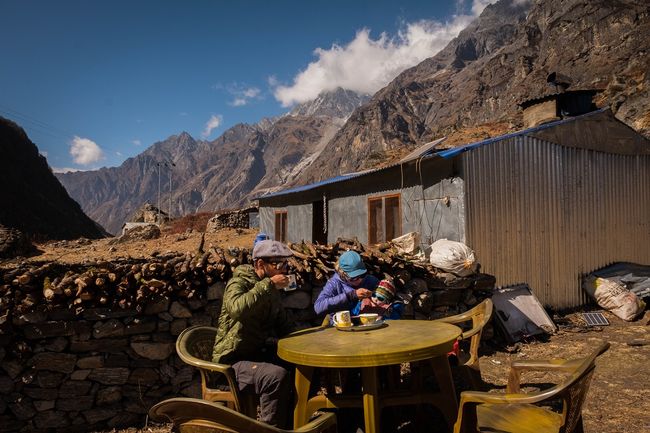
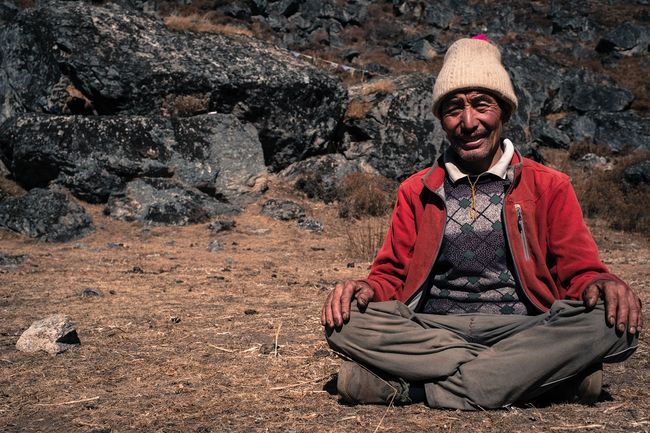
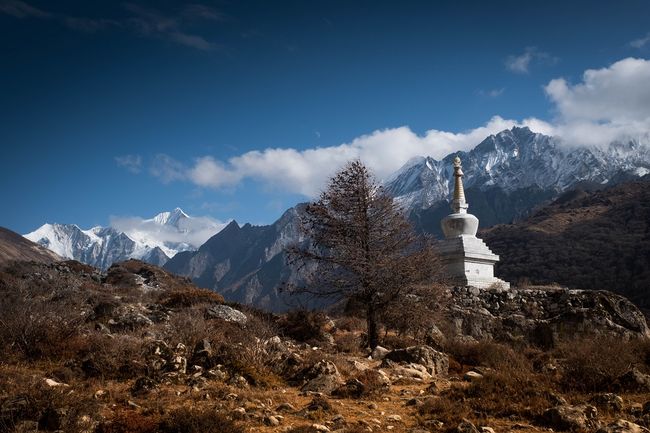
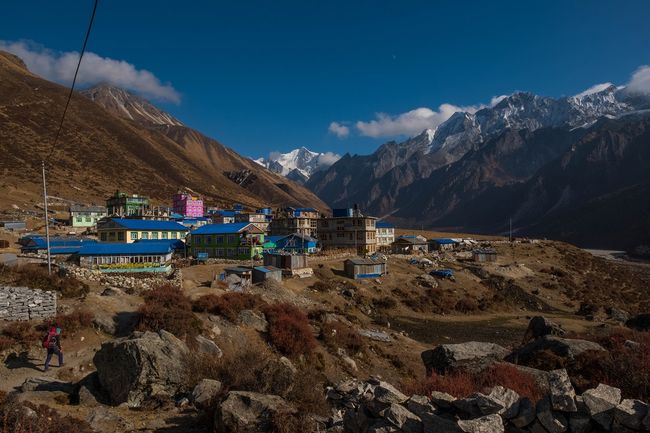
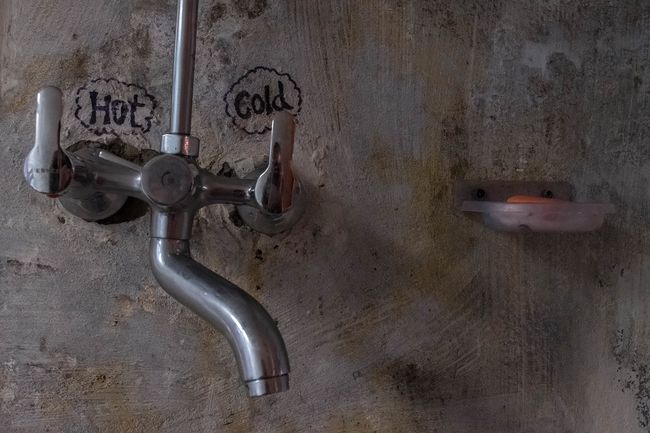
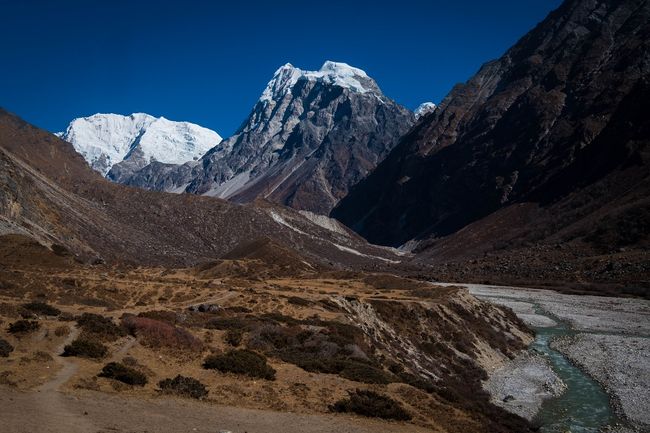
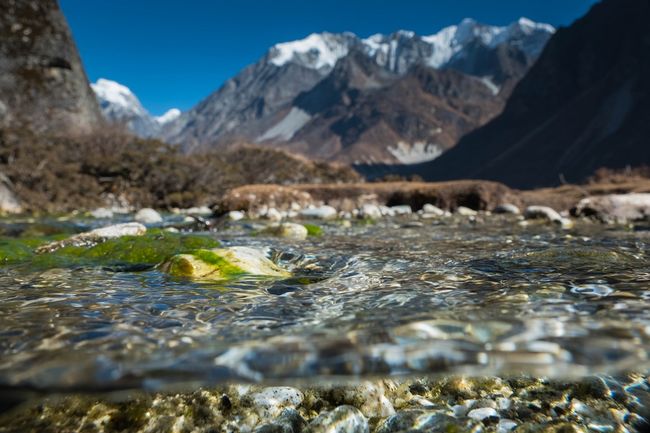
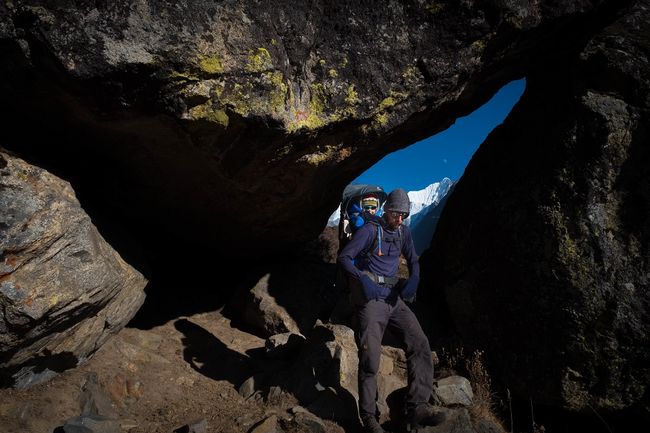
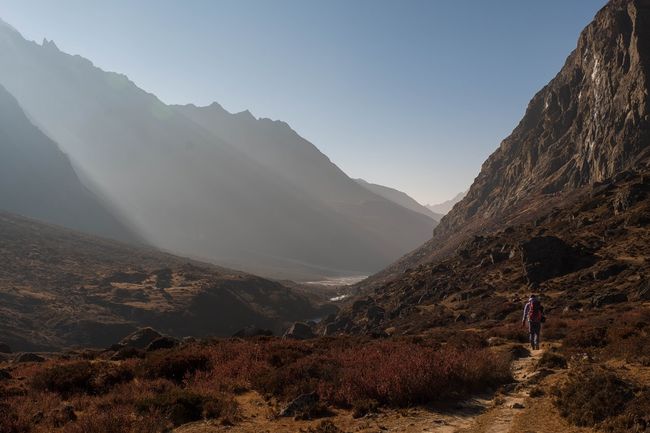
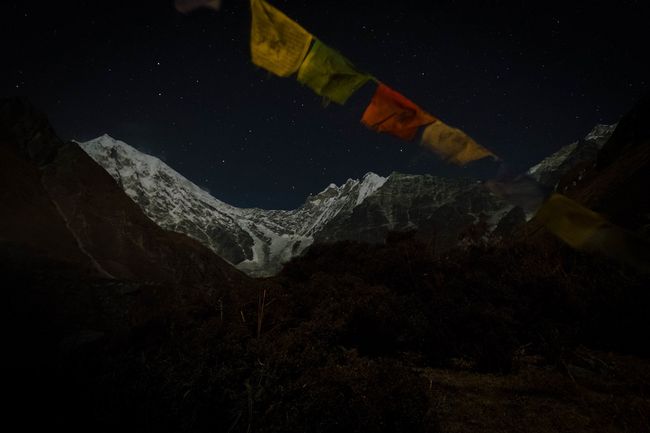
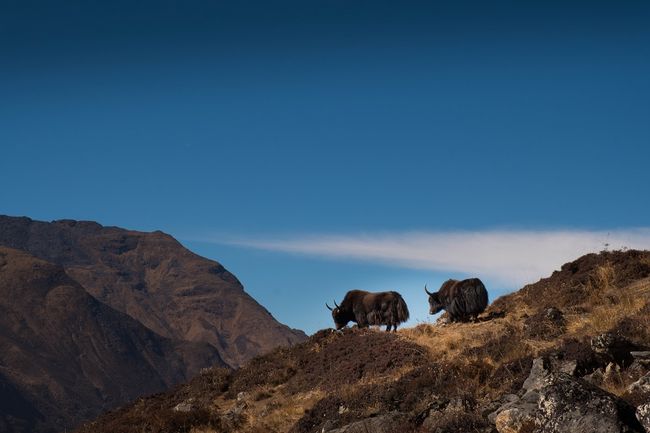
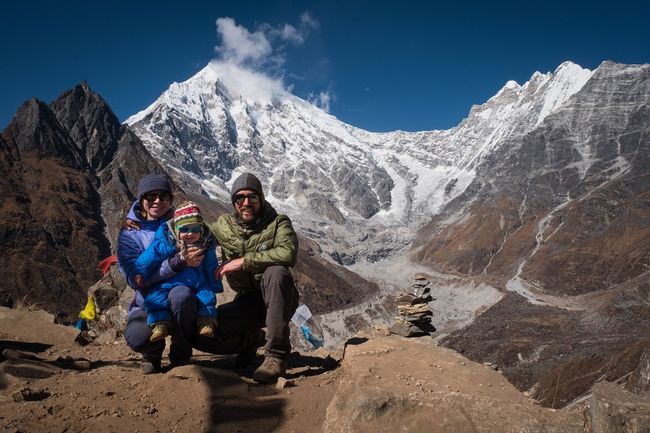
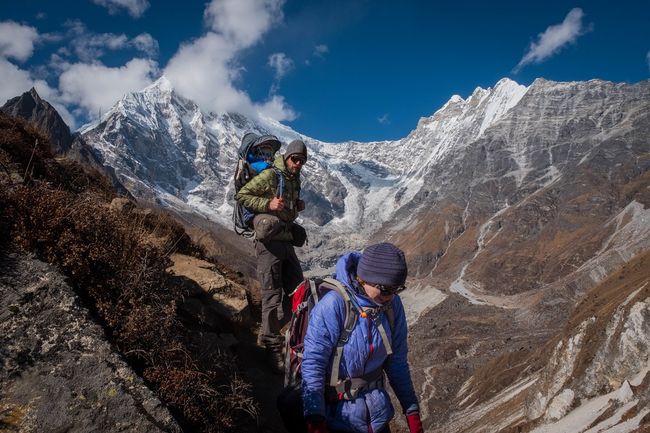
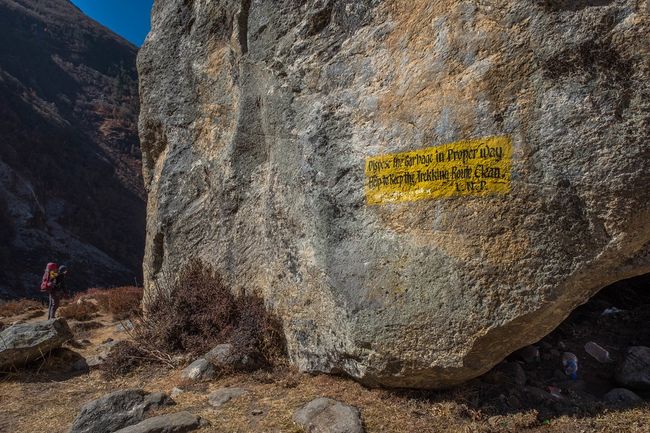
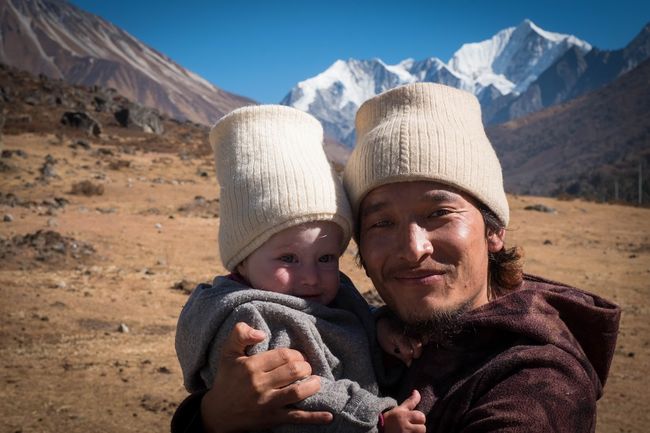
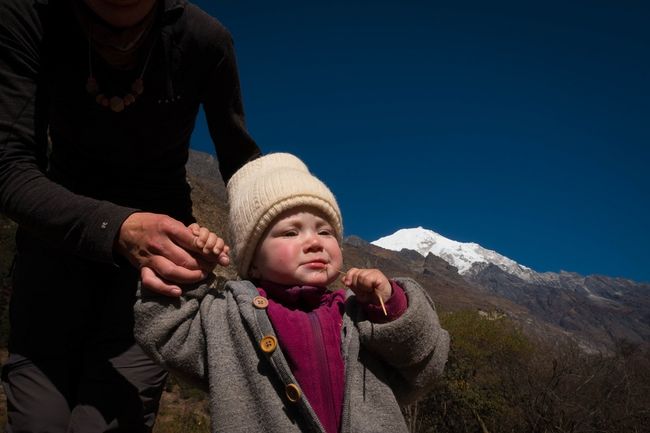
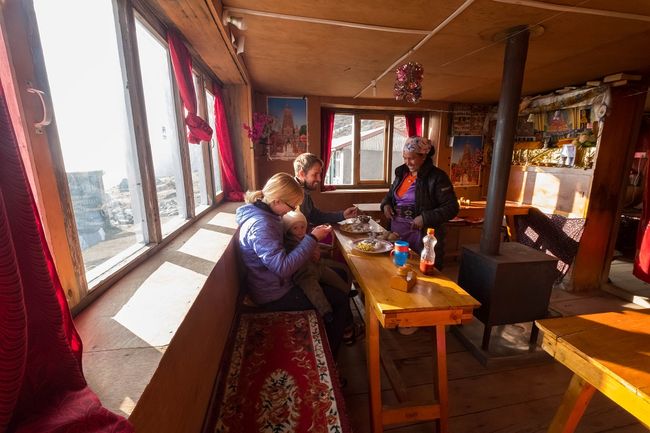
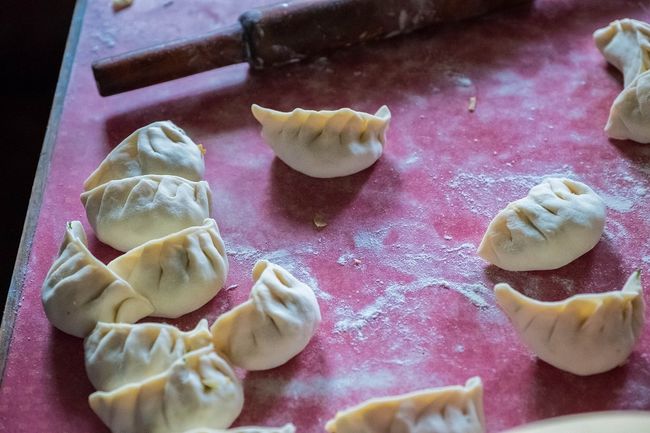
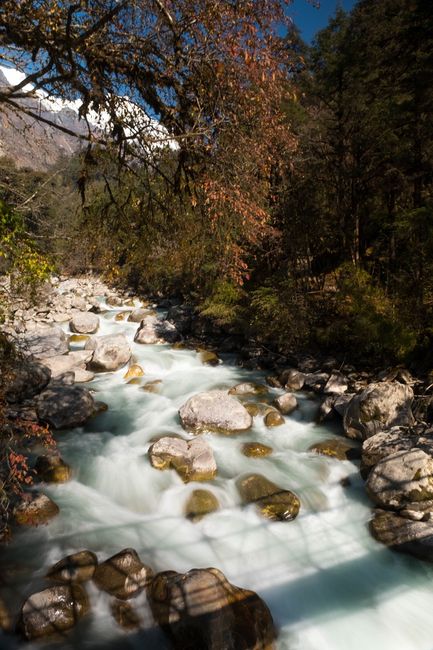
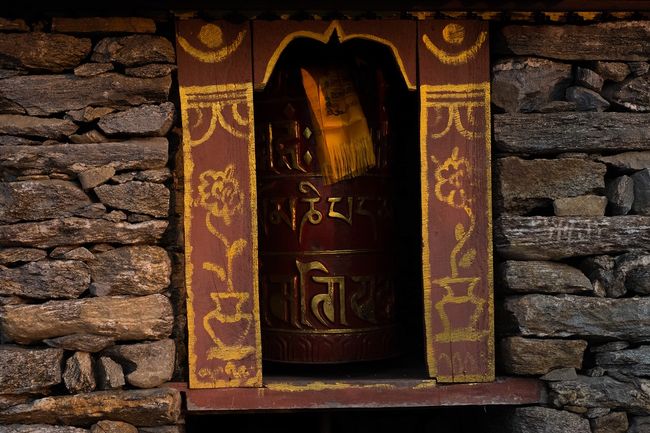
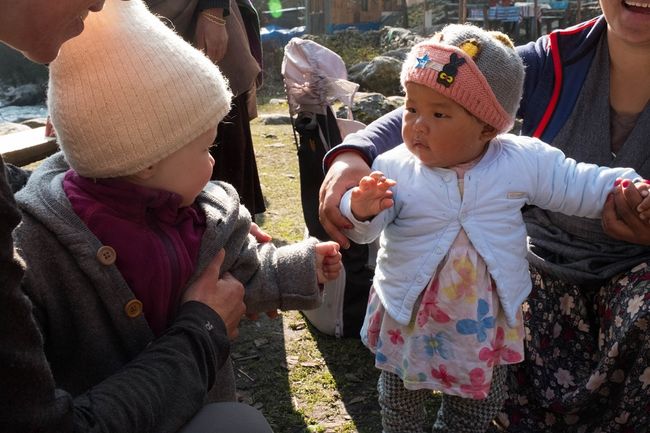
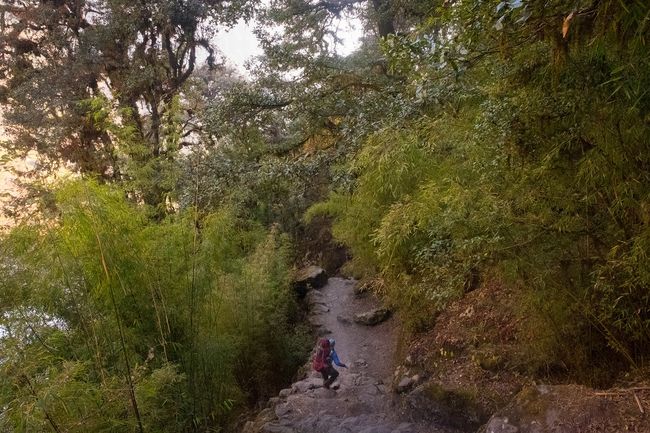
Ngolisa ho Newsletter
After a week's break in Thulo Barkhu, we laced up our hiking boots again. We had to struggle with motivation, especially Swenja: the 2,000 meters of elevation gain that lay ahead of us and the expected cold nights made the tropical Southeast Asia, where we wanted to travel next, appear even more enticing. Under these circumstances, the Langtang Trek proved to be very appropriate: with well-developed lodge infrastructure and not too demanding trail conditions, it still offered impressive landscapes, mountain panoramas, and Tibetan culture. The Langtang Valley gained sad fame due to the severe earthquake in 2015: the village of Langtang was completely buried under a landslide and ice avalanche. Over a hundred villagers and tourists died in the process.
Since we left most of our luggage in Thulo Barkhu and the trail was easy to find, we were able to hike without a guide and porter. As much as we enjoyed the company of both, it was also exciting for us to continue hiking on our own. We could be more spontaneous and had more direct contact with the locals.
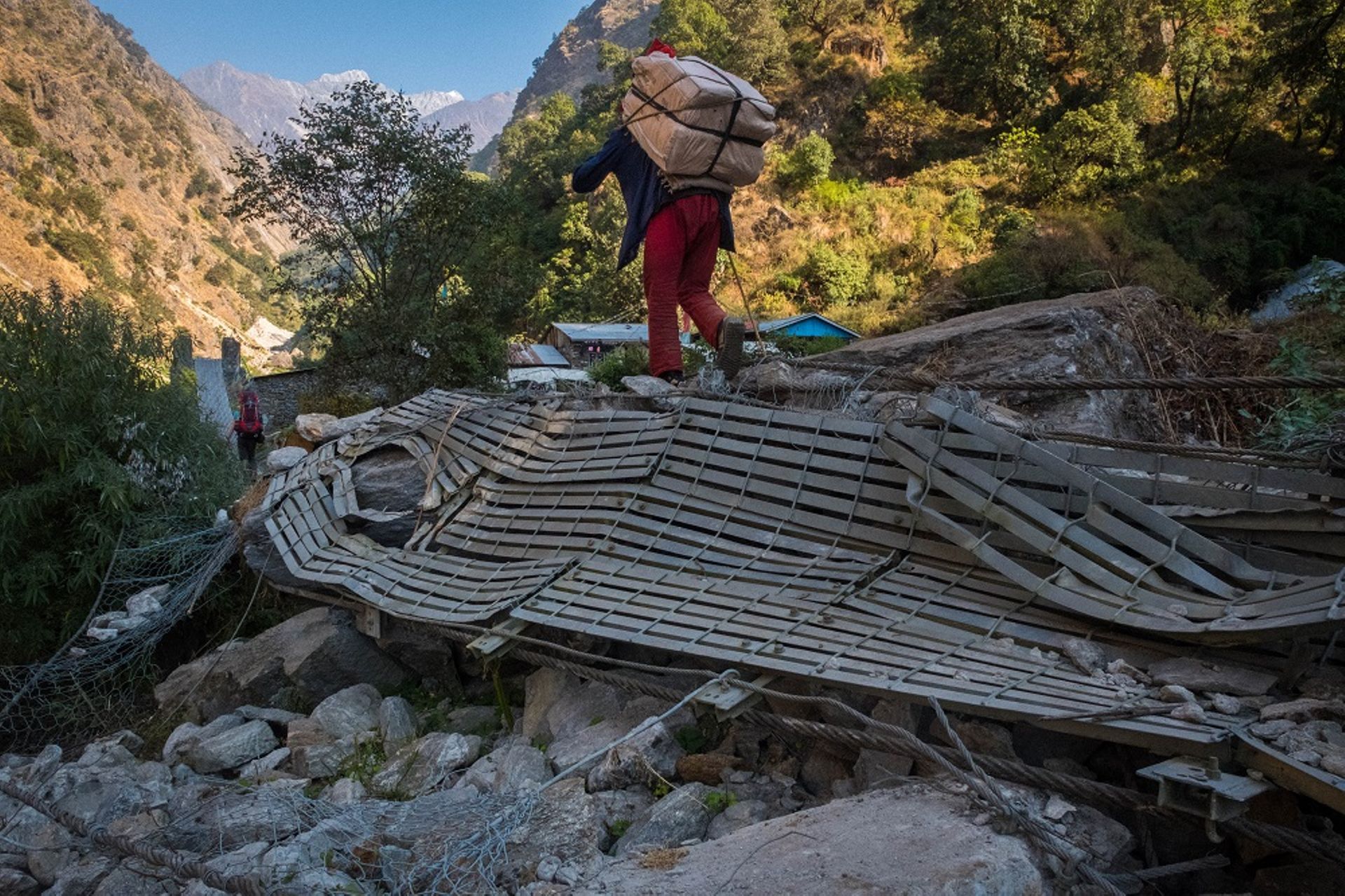
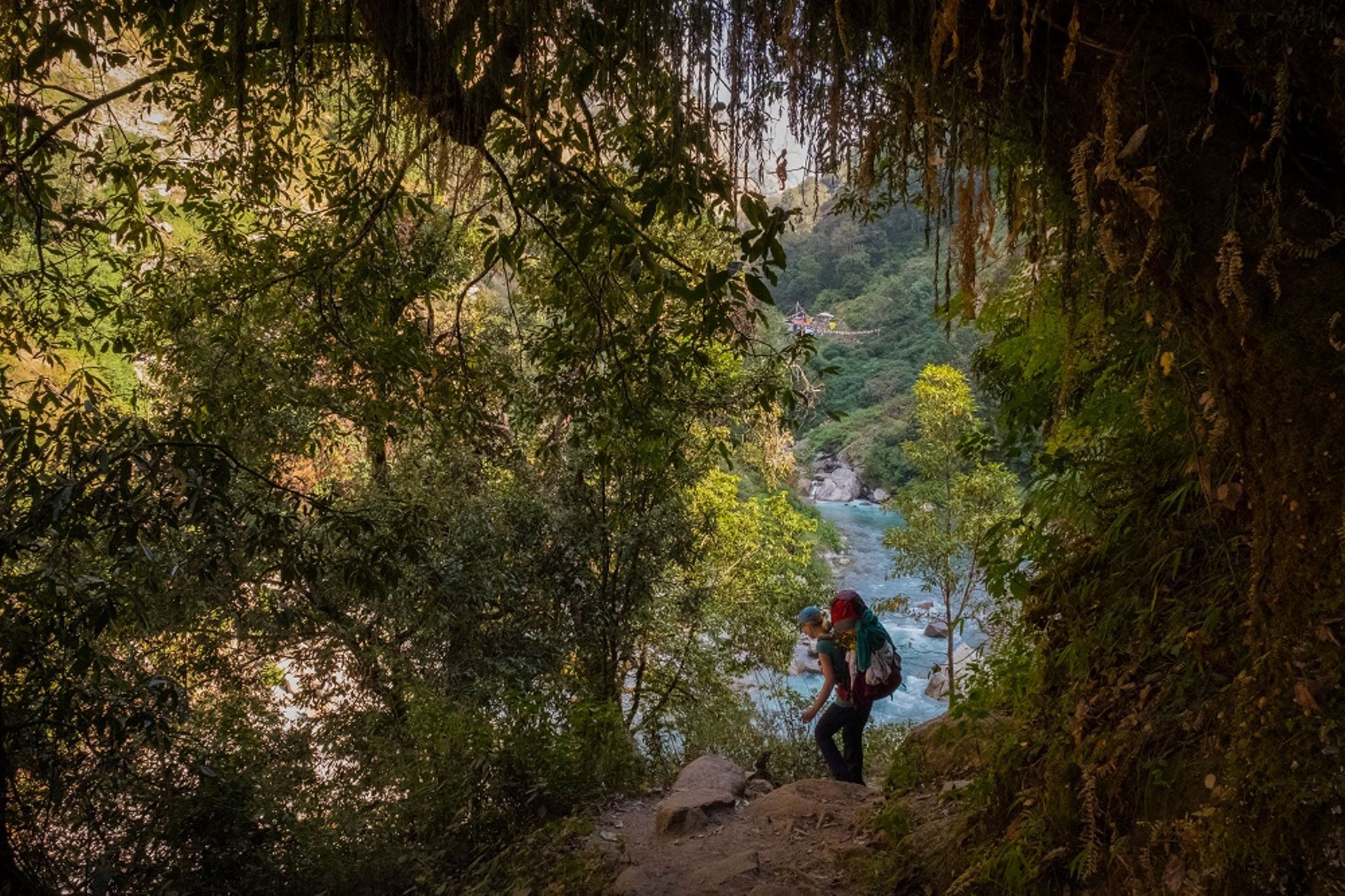
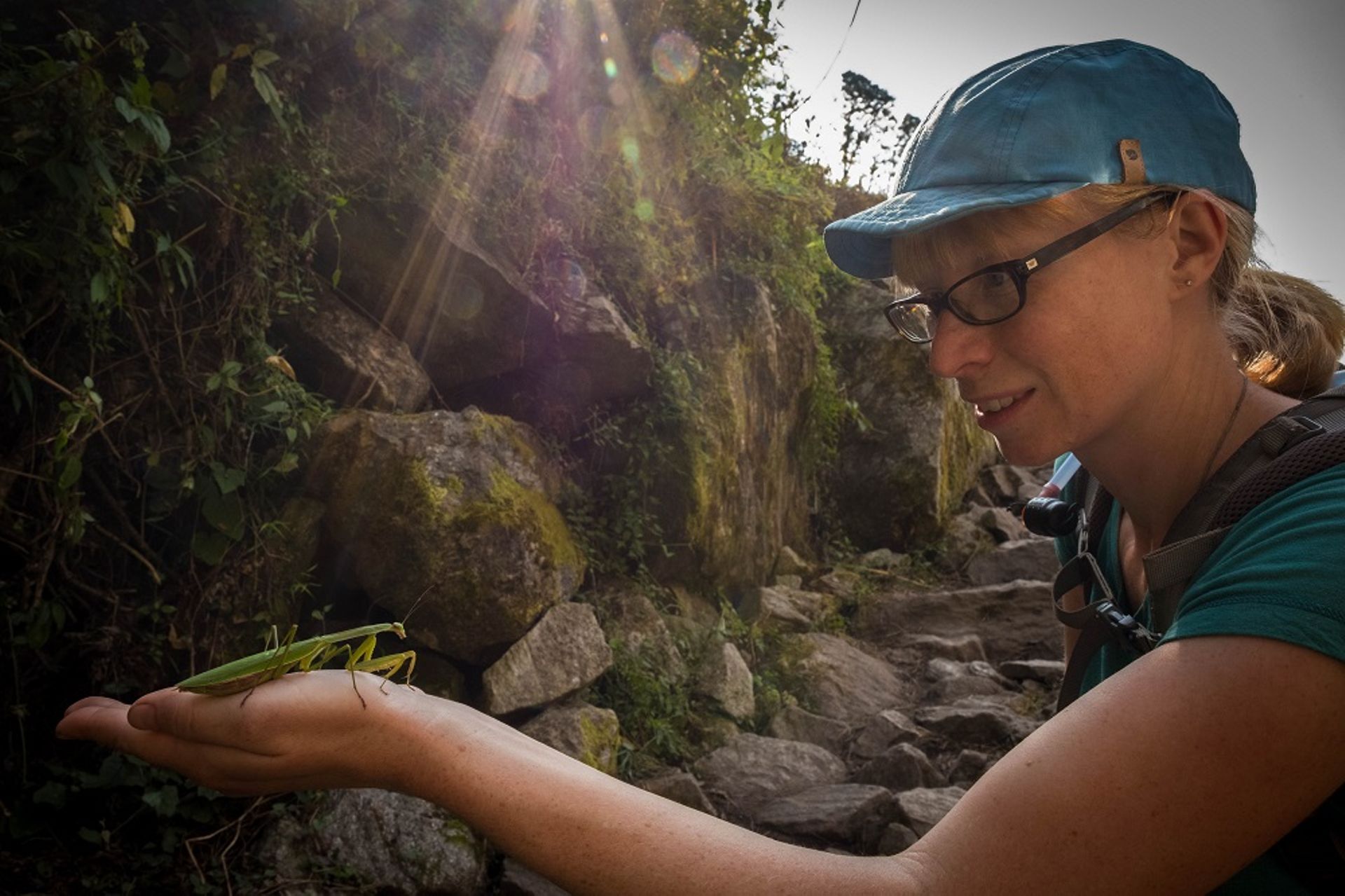

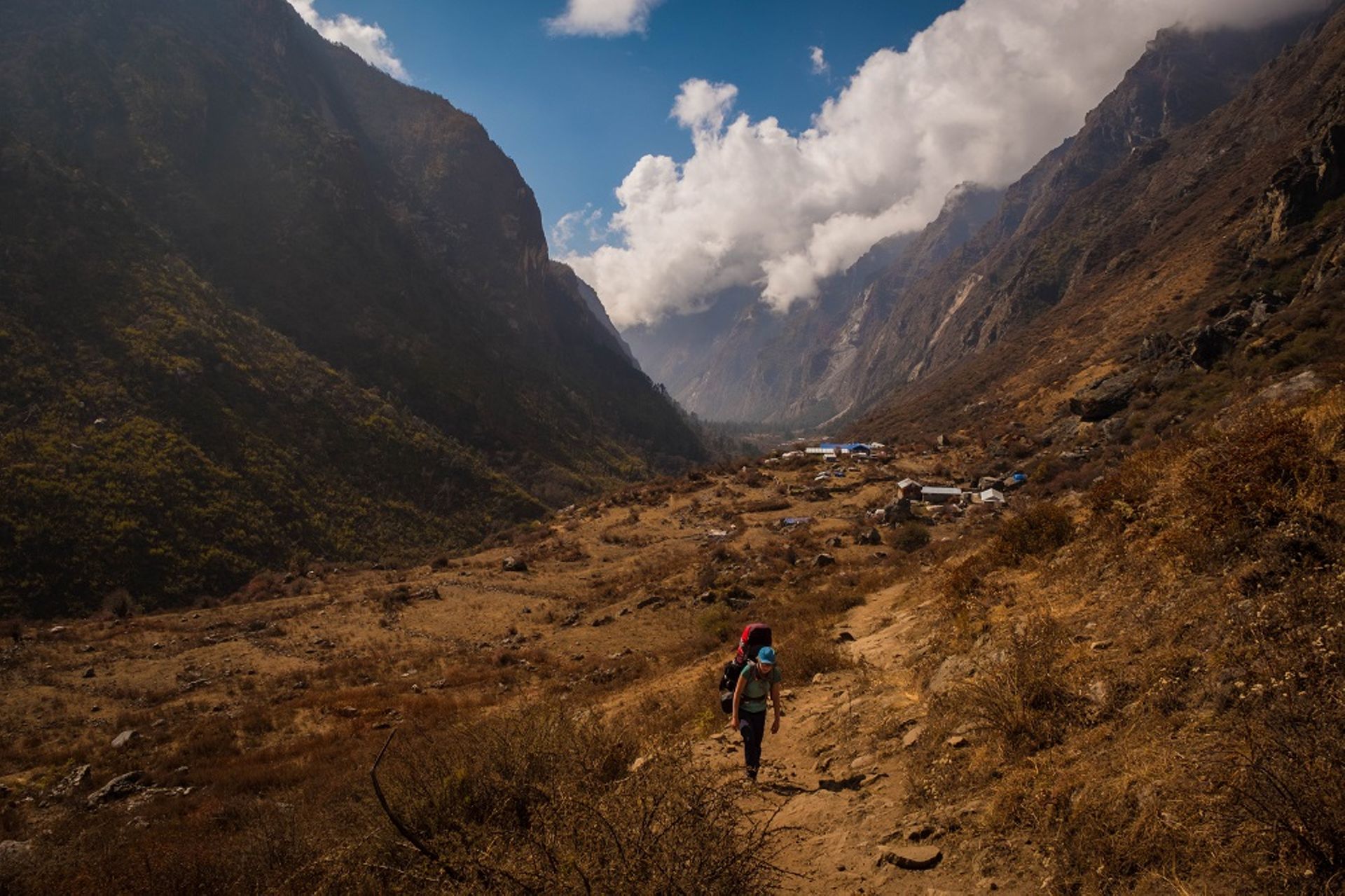
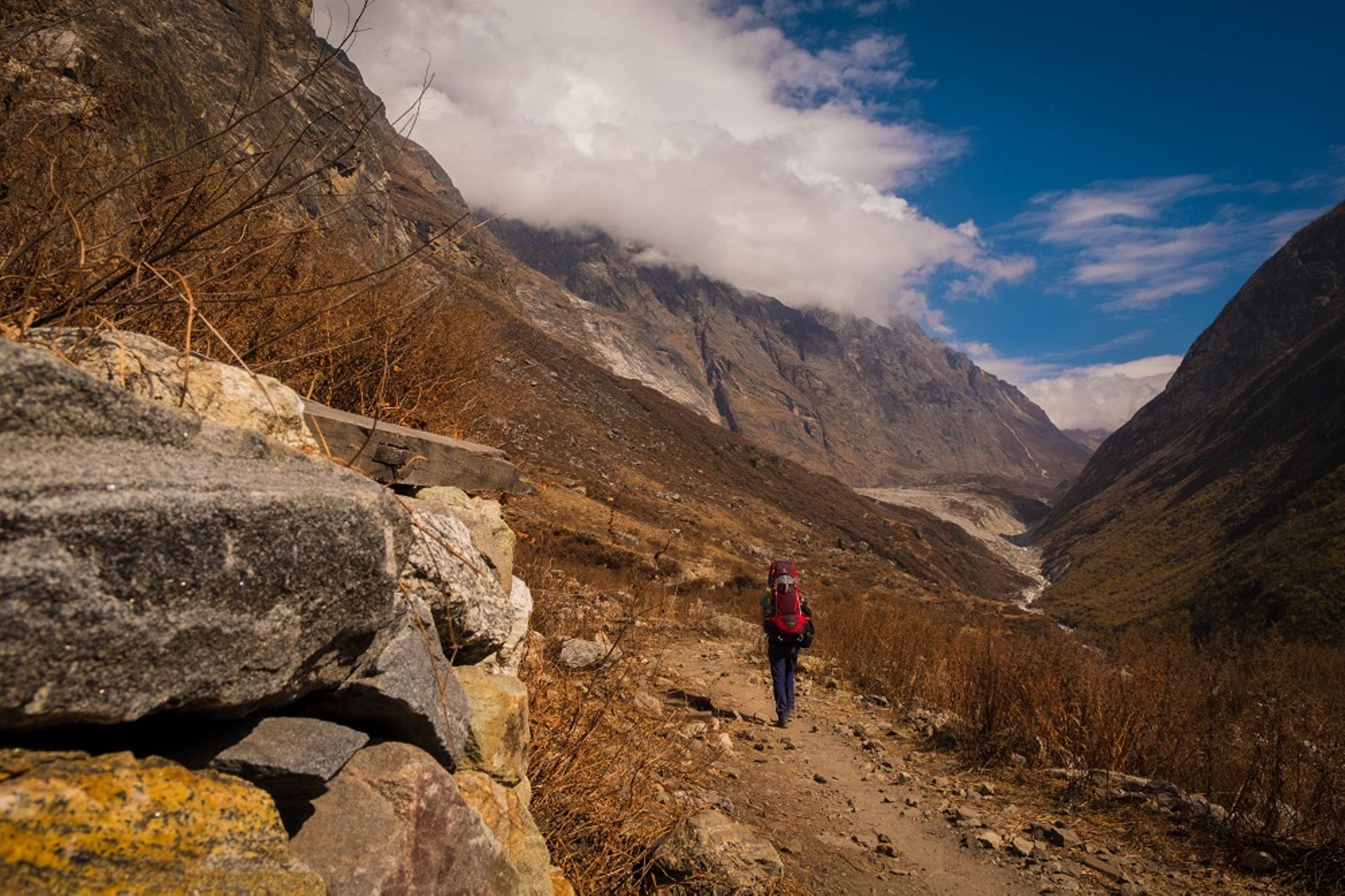
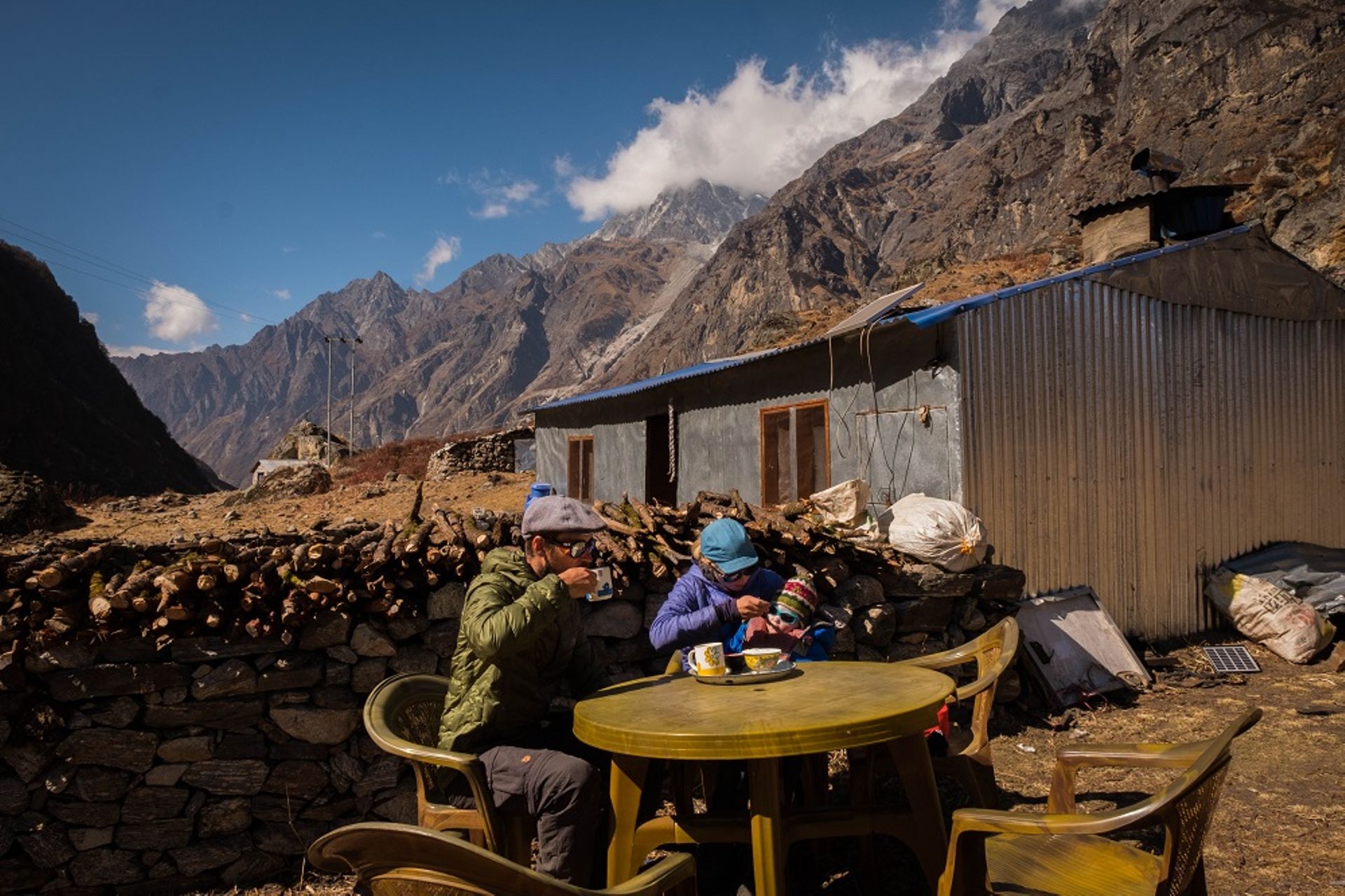
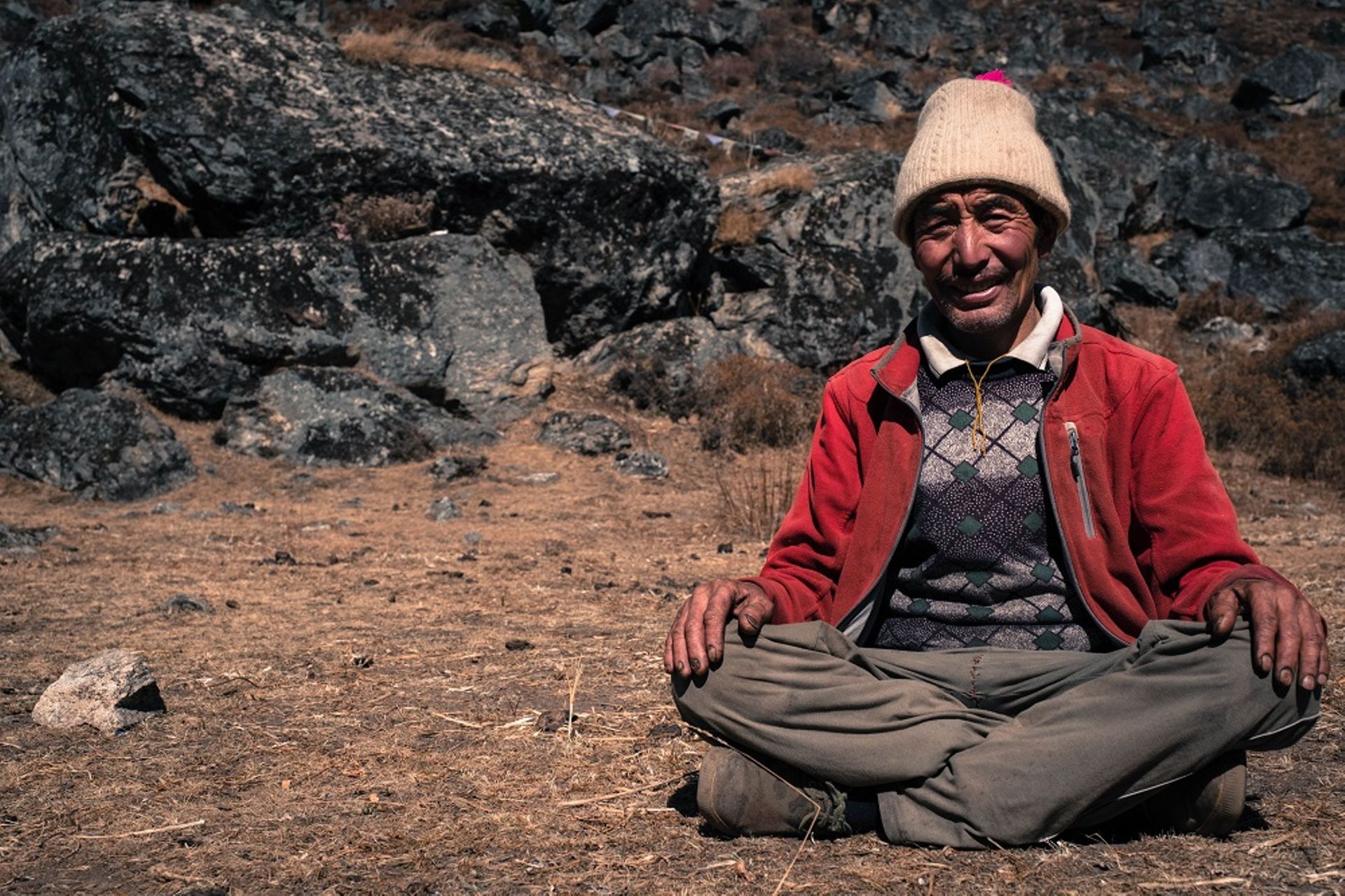
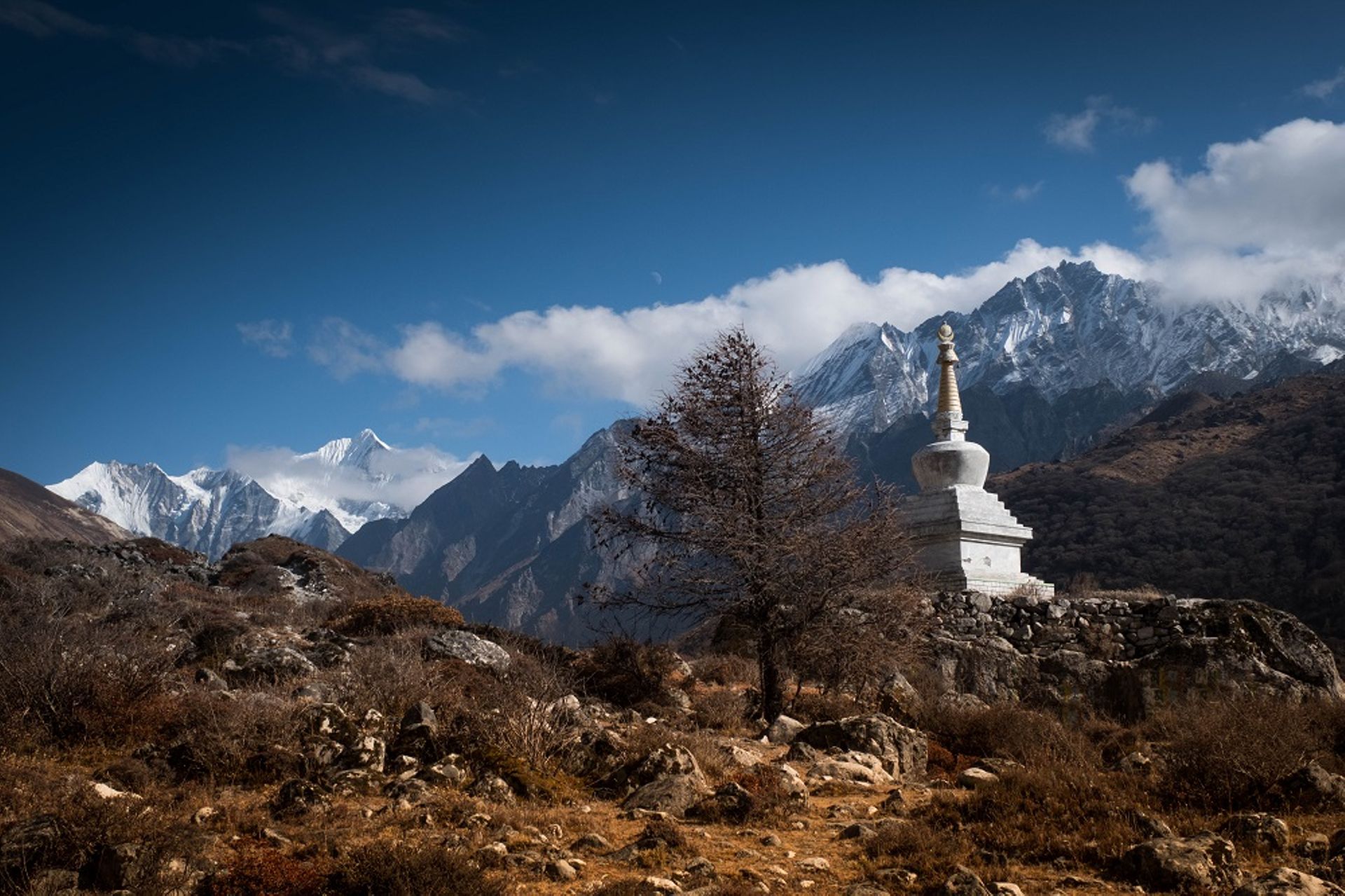
After the challenging time in the Ruby Valley, the well-developed lodges in the Langtang Valley were just what we needed. We also enjoyed the table conversations with other travelers in the evenings. We had the impression that it was quite busy, with many individual trekkers like us, as well as large guided groups occupying several lodges. We were surprised to hear that the number of visitors is still far from reaching the level before 2015. Many residents have built tourist accommodations after the earthquake, partly financed by donations or government funds, but the big rush has not materialized. This also seems to lead to increased competition and envy within the village community. Nevertheless, new lodges are being built diligently. Since we were already on the trek in the off-season, this fact turned out to be an advantage for us: the lodge owners lured us with the offer that we didn't have to pay for the room, only for our meals. However, this special offer can only be obtained if you are trekking without a guide and porter. So it paid off doubly for us that we carried our own bags!
Especially on the Langtang Trek, we learned to appreciate the fact that we had so much time available and could plan and design it completely independently. While most hikers complete the ascent of the Langtang Trek in three days, we took our time and arrived after five days. We also allowed ourselves the luxury of sleeping in, enjoying long breakfasts, or chatting extensively with yak herders. Apart from that, we also had to wash diapers and then warm our half-frozen hands on a hot cup of tea. Now that Antonia has discovered the joy of walking, she was also happy about shorter hiking distances: less time in the carrier, more time for walking.
At the end of the Langtang Trek lies the village of Kyanjin Gompa at 3,850 meters. Here too, many buildings were destroyed by the earthquake. Today, the village consists mainly of lodges, from small traditional-style buildings to large pink-painted concrete structures, all haphazardly scattered around. We secured what was probably the best room in the whole village based on a recommendation from other hikers: one of the smaller lodges has a large triple room that is located directly above the dining area. Since this area is well heated in the evenings and both the warmth and the hot smoke rise through the chimney, we had a cozy warm night. That was also one of the reasons why we stayed in Kyanjin Gompa for a whole five nights while many others descended after one or two nights. However, another reason was that it was worth it!
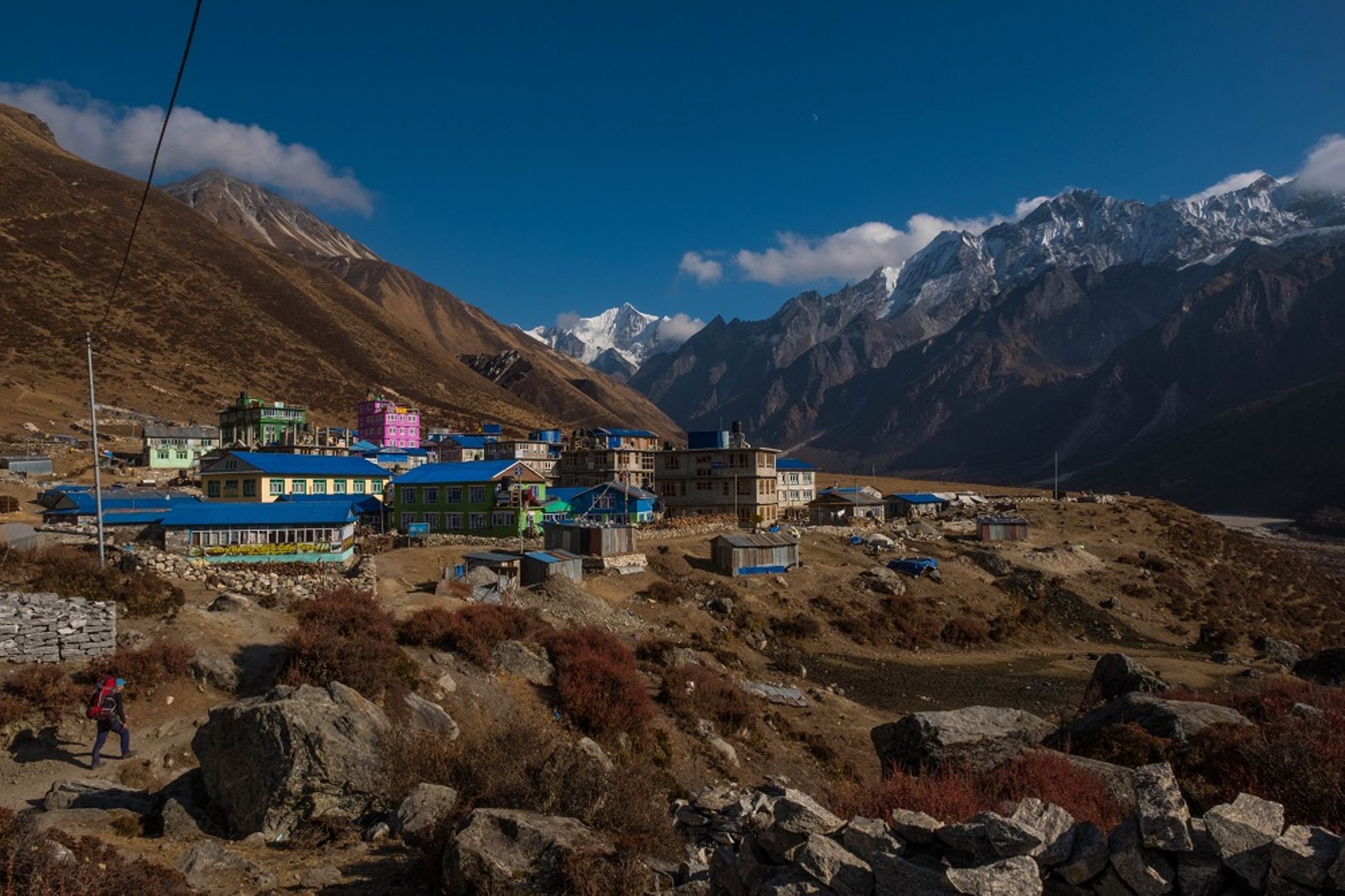
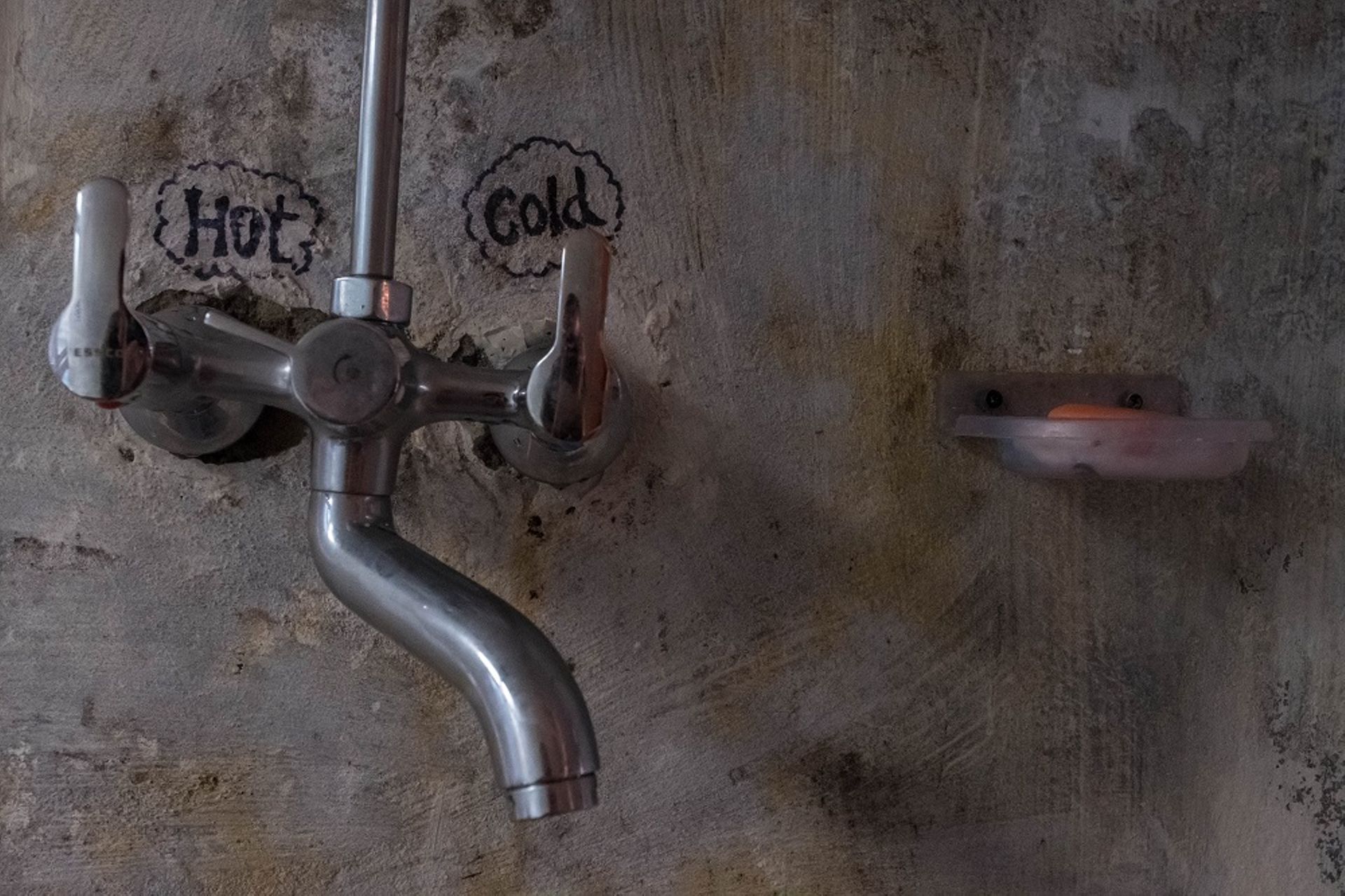
There is a lot to do from Kyanjin Gompa. You can climb two peaks at 4,773 and 4,984 meters, from which you can enjoy phenomenal views. However, we found it even more rewarding to explore the river valley that extends behind Kyanjin Gompa towards Tibet. There are no more lodges there, but also hardly any other hikers. Instead, you can find semi-wild yak herds and a magnificent landscape. It's hard not to forget about time and just keep walking. For us, this day in the river valley behind Kyanjin Gompa turned out to be one of the most impressive of our entire Himalayan journey. Unusually also because it was not about climbing the highest peak possible, but rather strolling comfortably through the valley and letting the impressive landscape take effect on us. Of course, Matthias couldn't resist climbing the higher of the two mentioned peaks in the following days.
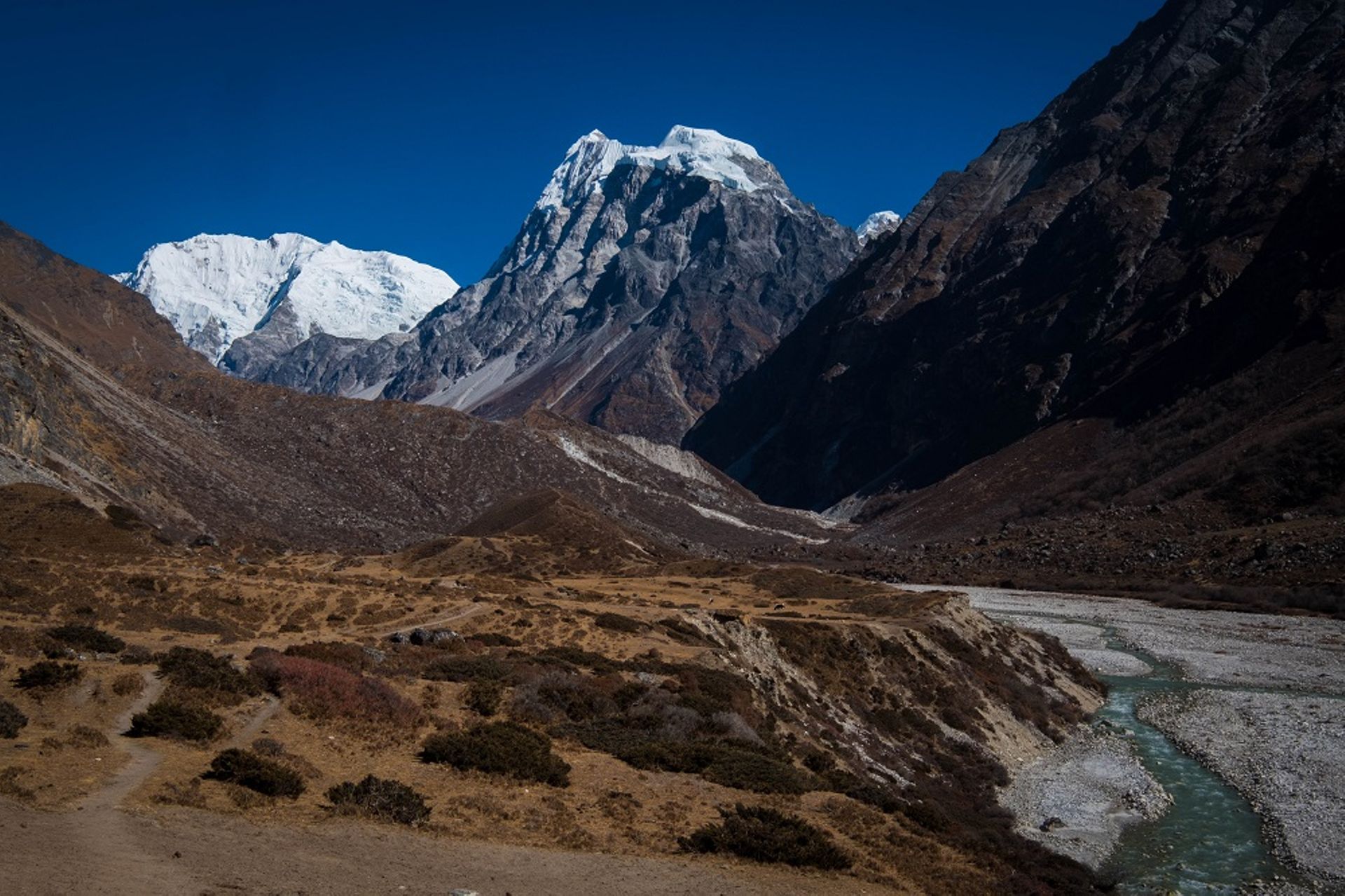
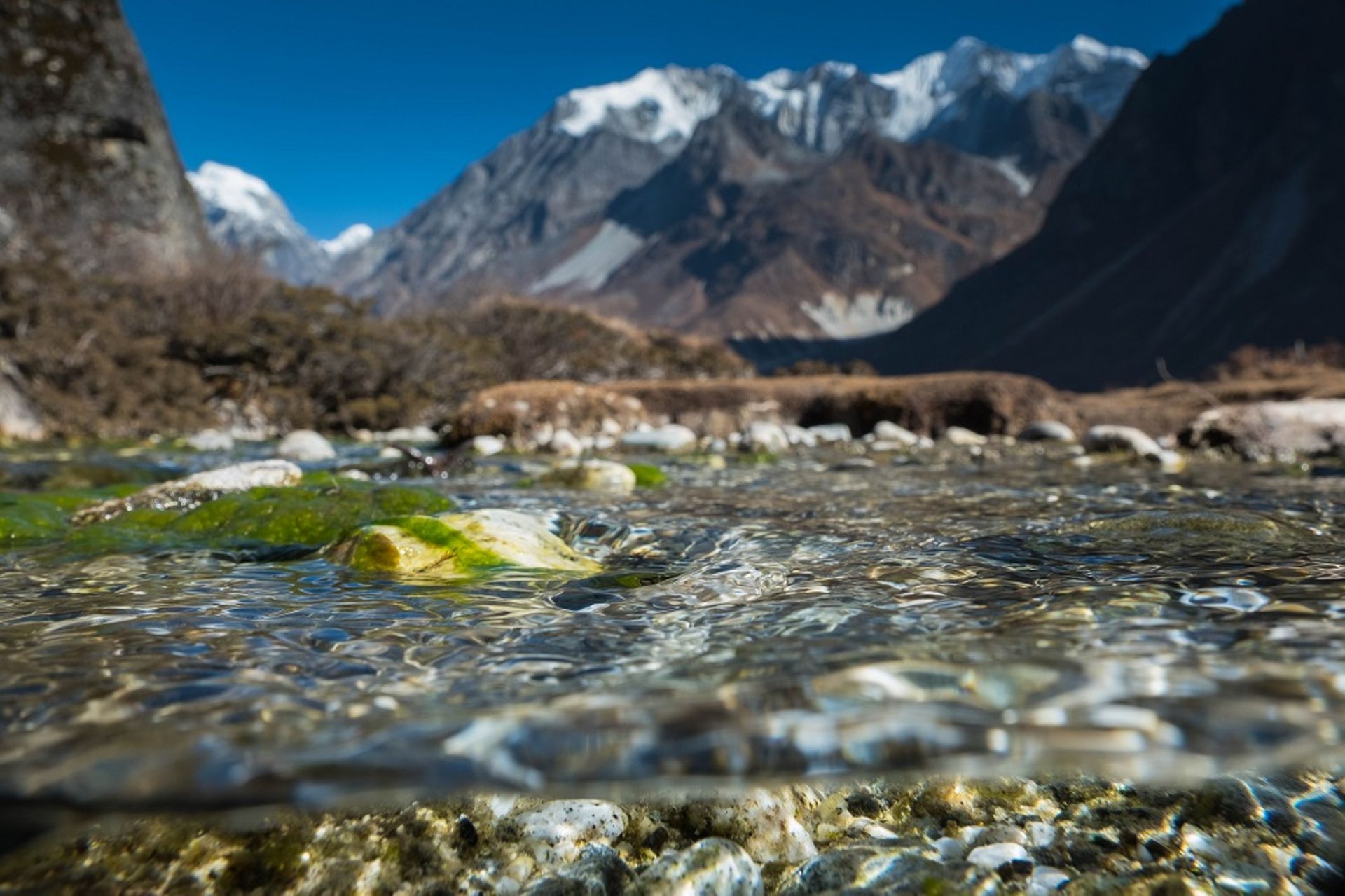
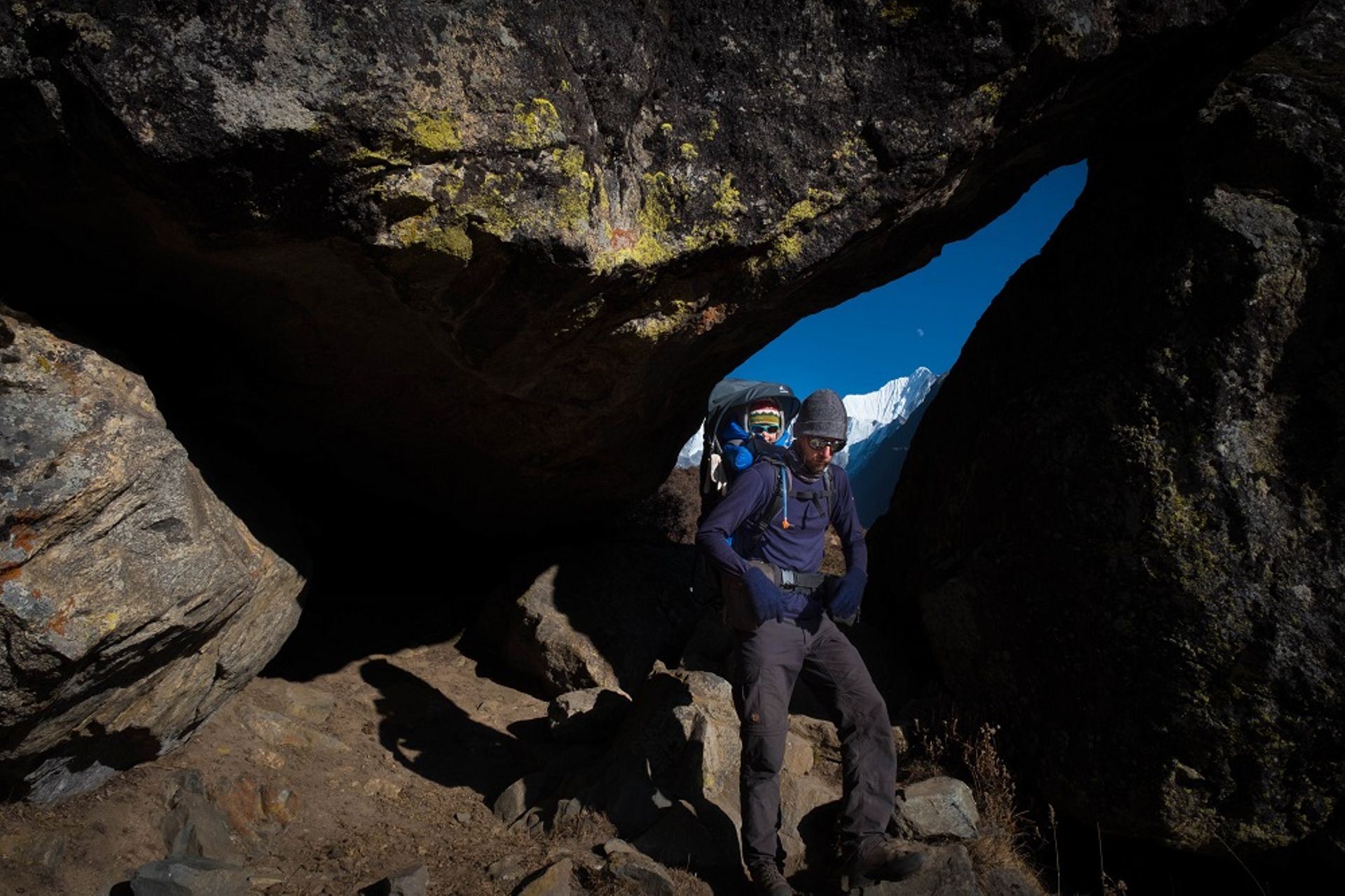
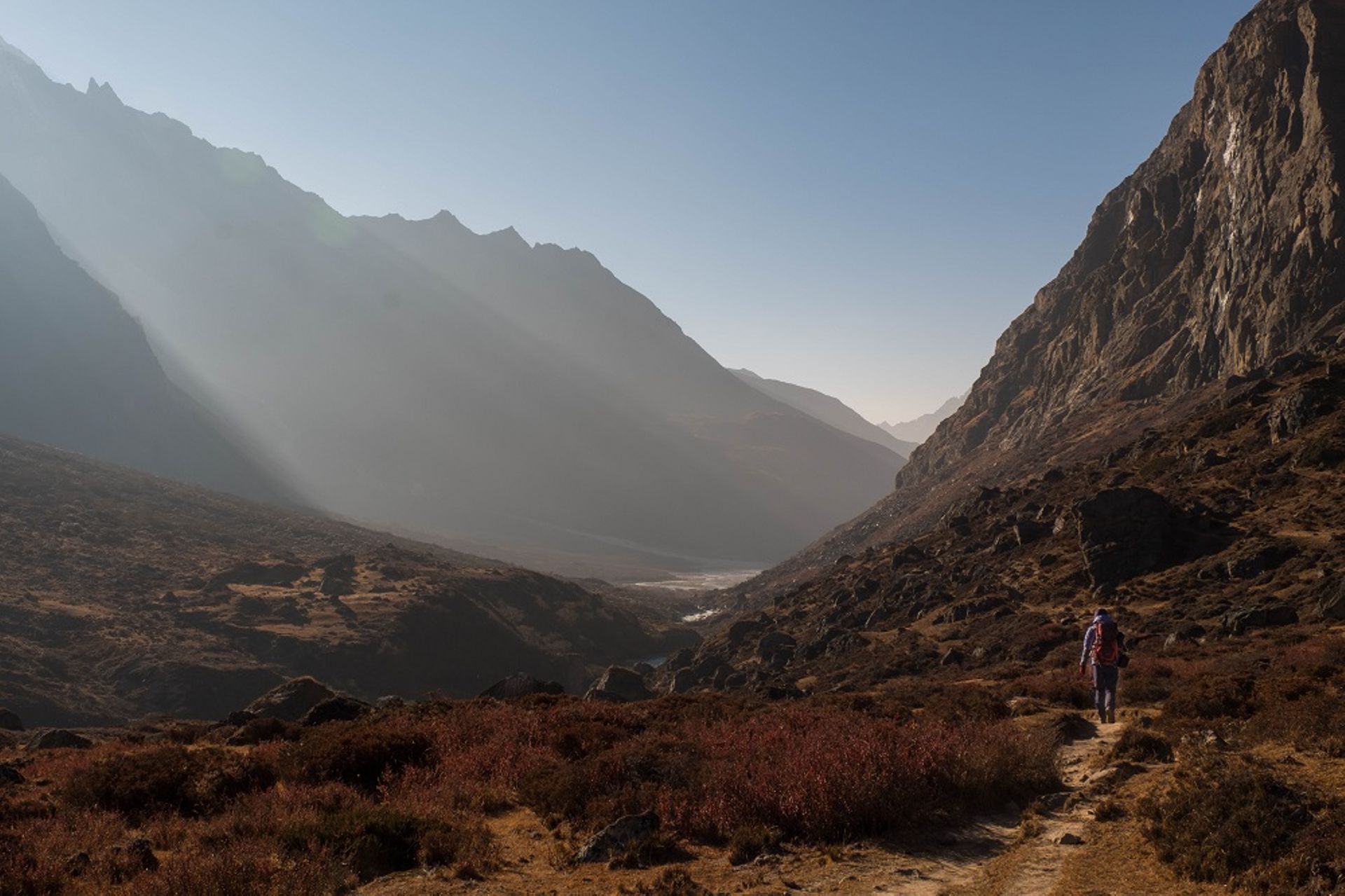
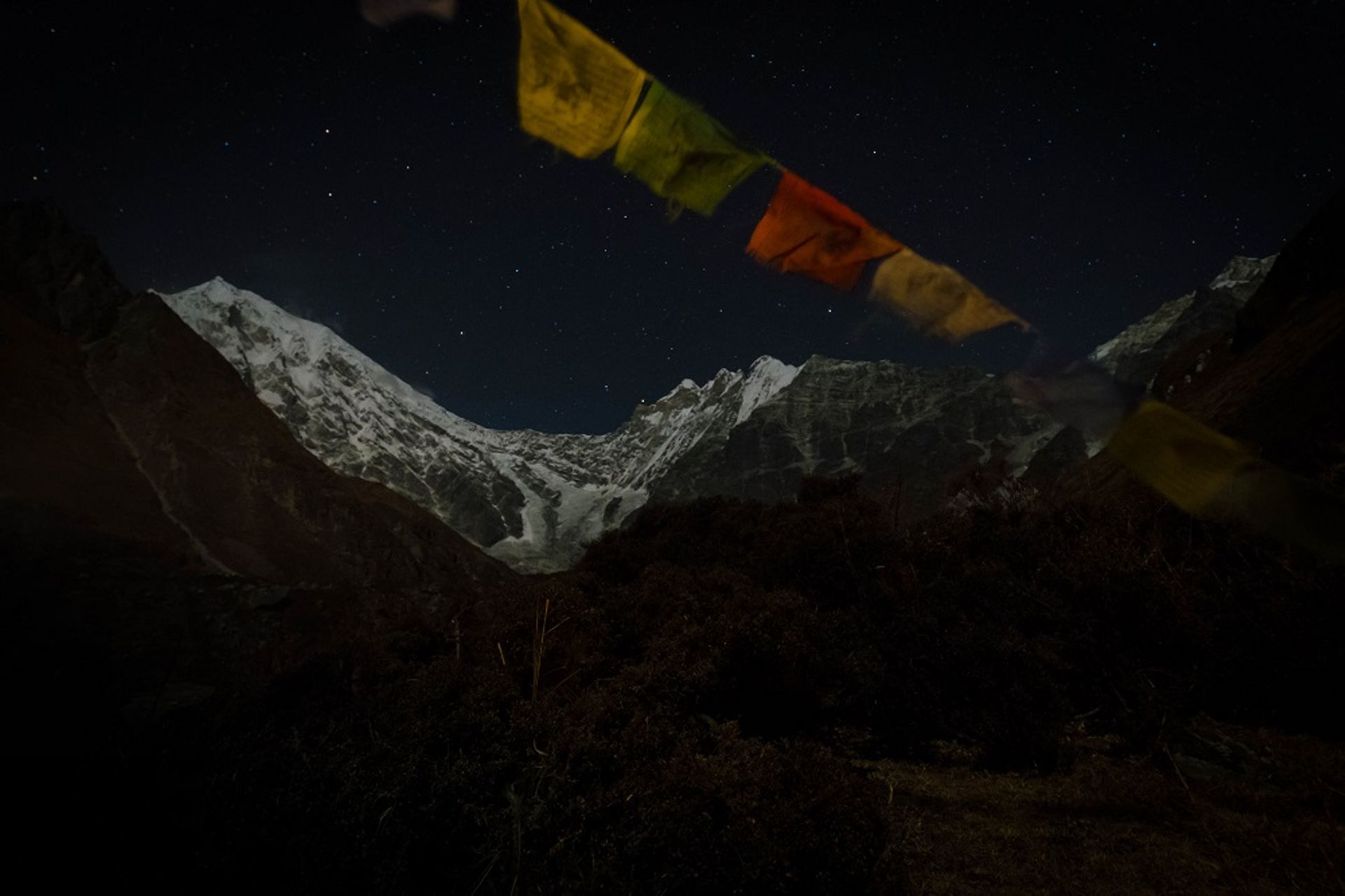
We greatly enjoyed our stay in Kyanjin Gompa thanks to Dorje's bakery. The apple pie of the baker Lokpa is known throughout the valley, but our highlight was his frangipani almond tart. A visit to the bakery was part of our daily program. This is how Antonia also made her first appearance on Facebook: Lokpa posted a photo of his youngest guest so far. And the next day we found out from a comment that we have a mutual acquaintance in England on the other side of the world.
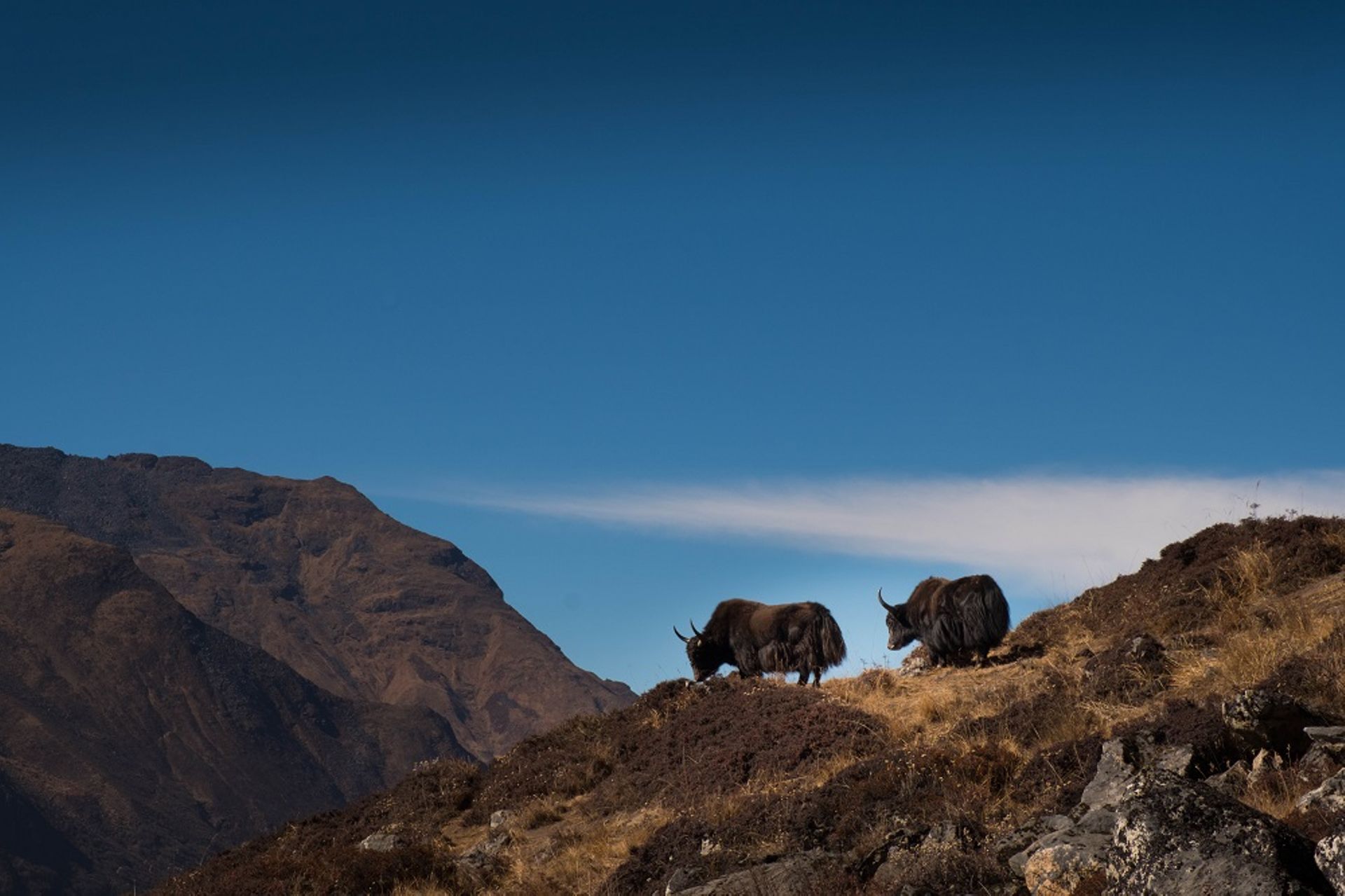
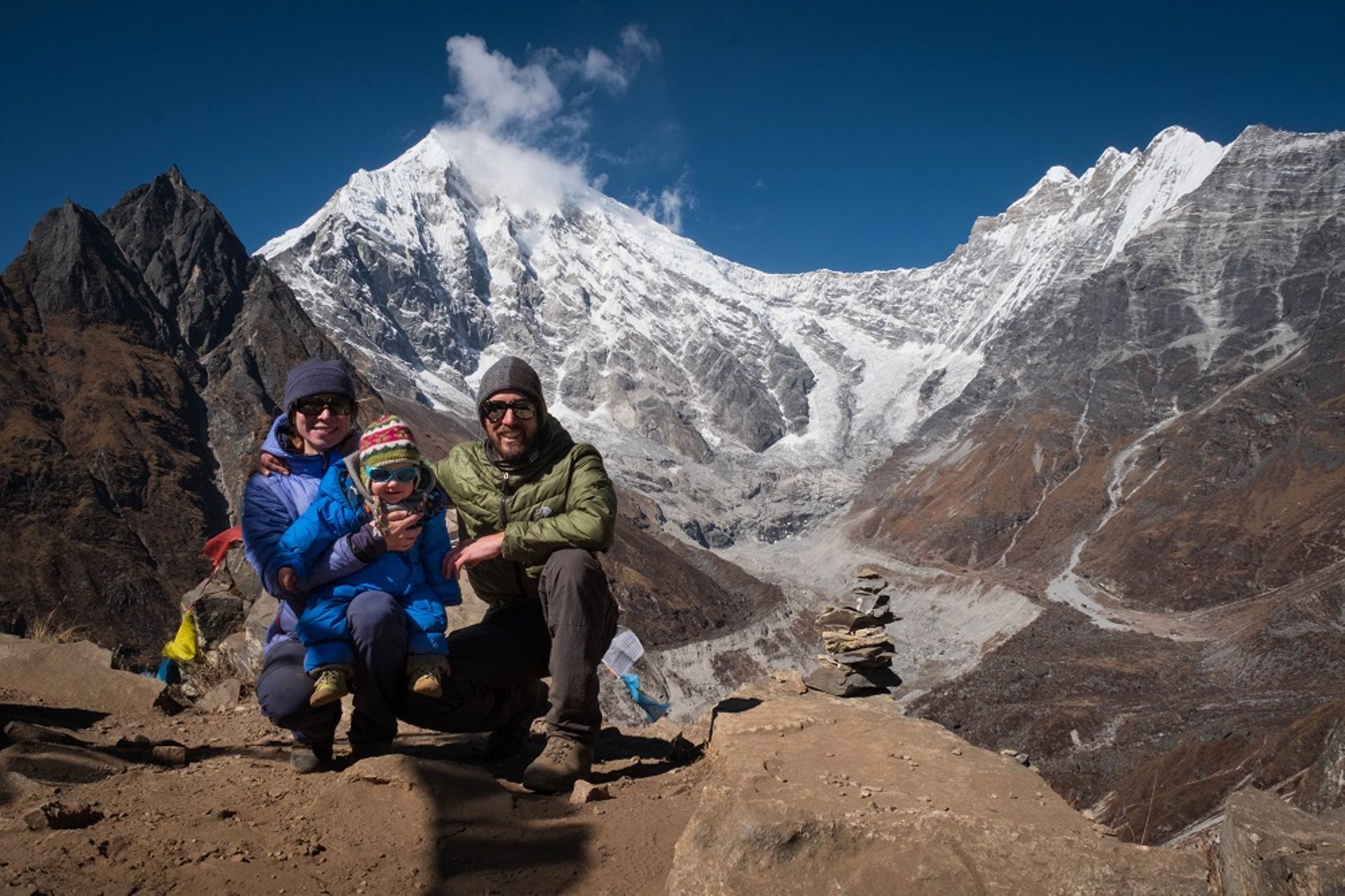
On the sub-peak of Kyanjin Ri. The highest point we reached together on our hike.
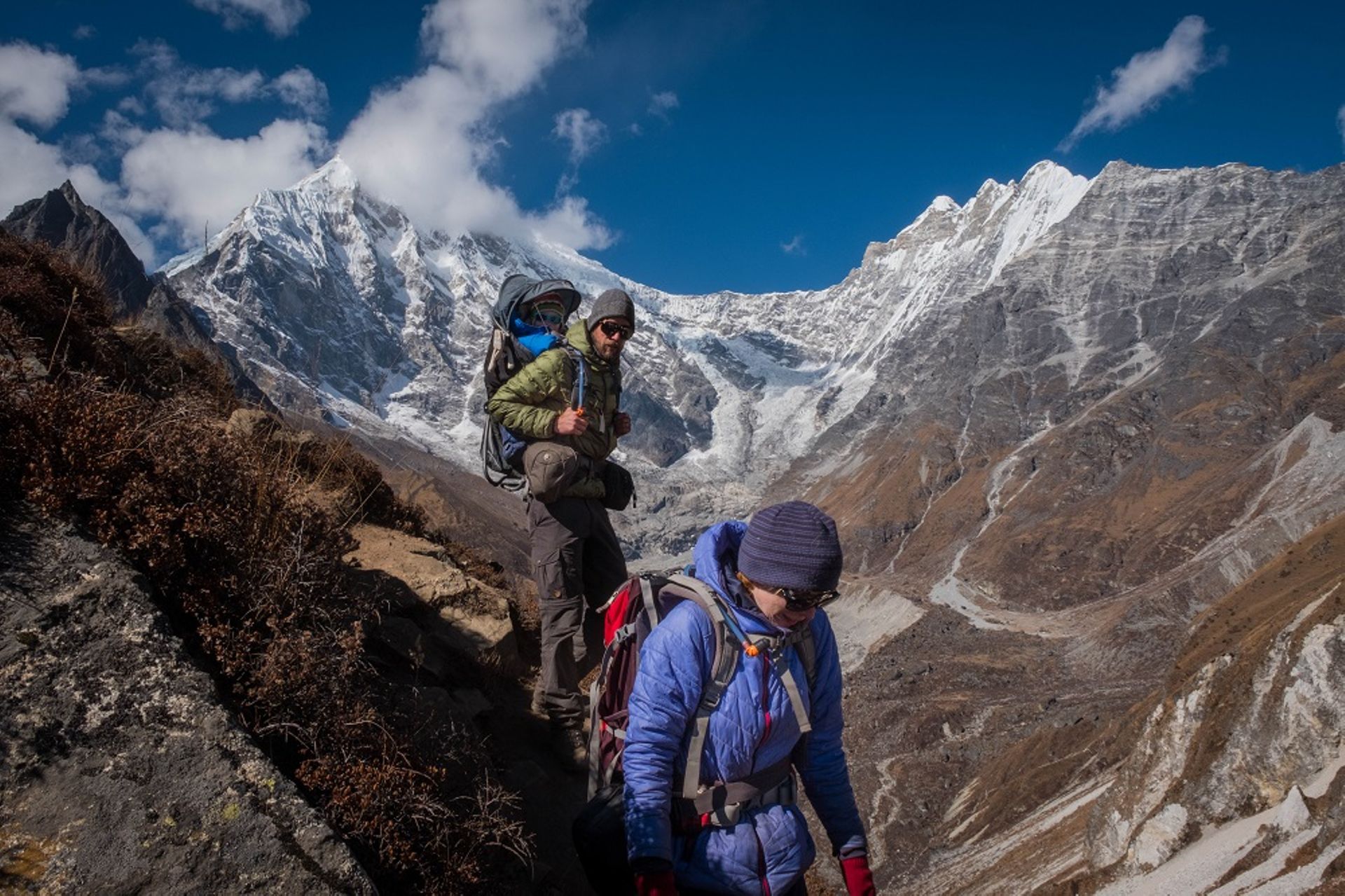
Just before our descent, we narrowly missed the inauguration of a new yak cheese factory. The invited guests were supposed to be flown in by helicopter, but it was delayed due to the weather conditions in Kathmandu. Only the Swiss ambassador was on time. She did not miss the opportunity to walk the path on foot.
On our way back down, we took our time and made a small detour. Because as impressive as the landscape is, we missed one thing on the Langtang Trek: villages. There are indeed many lodges, even large groups of lodges, but no villages where people live who do not make a living from tourism. With our detour on two stages of the Tamang Heritage Trail, we got a small impression of two villages. Furthermore, it made us realize once again how special the experience in the Ruby Valley was, with its villages and inhabitants still largely untouched by tourism.
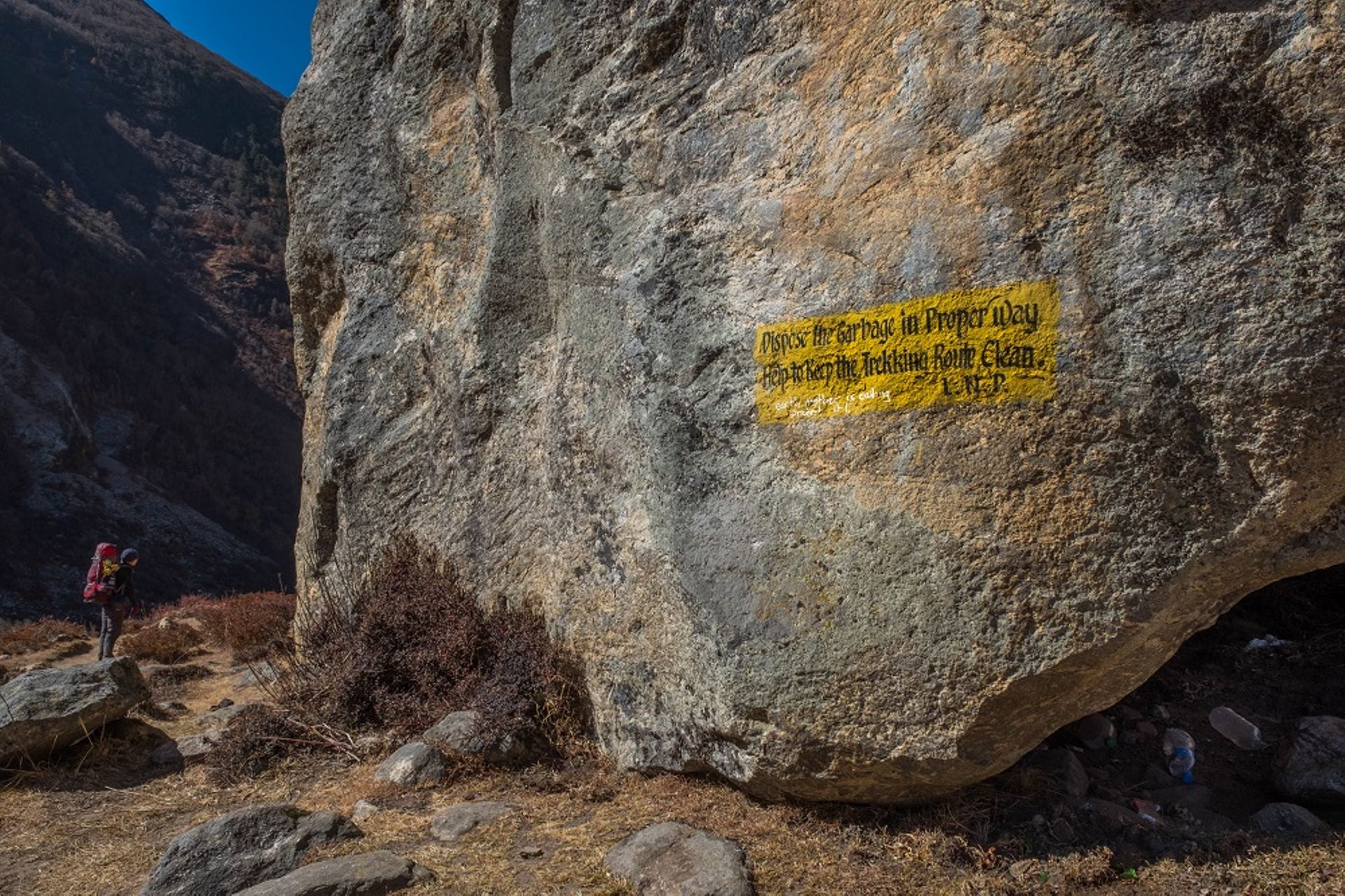
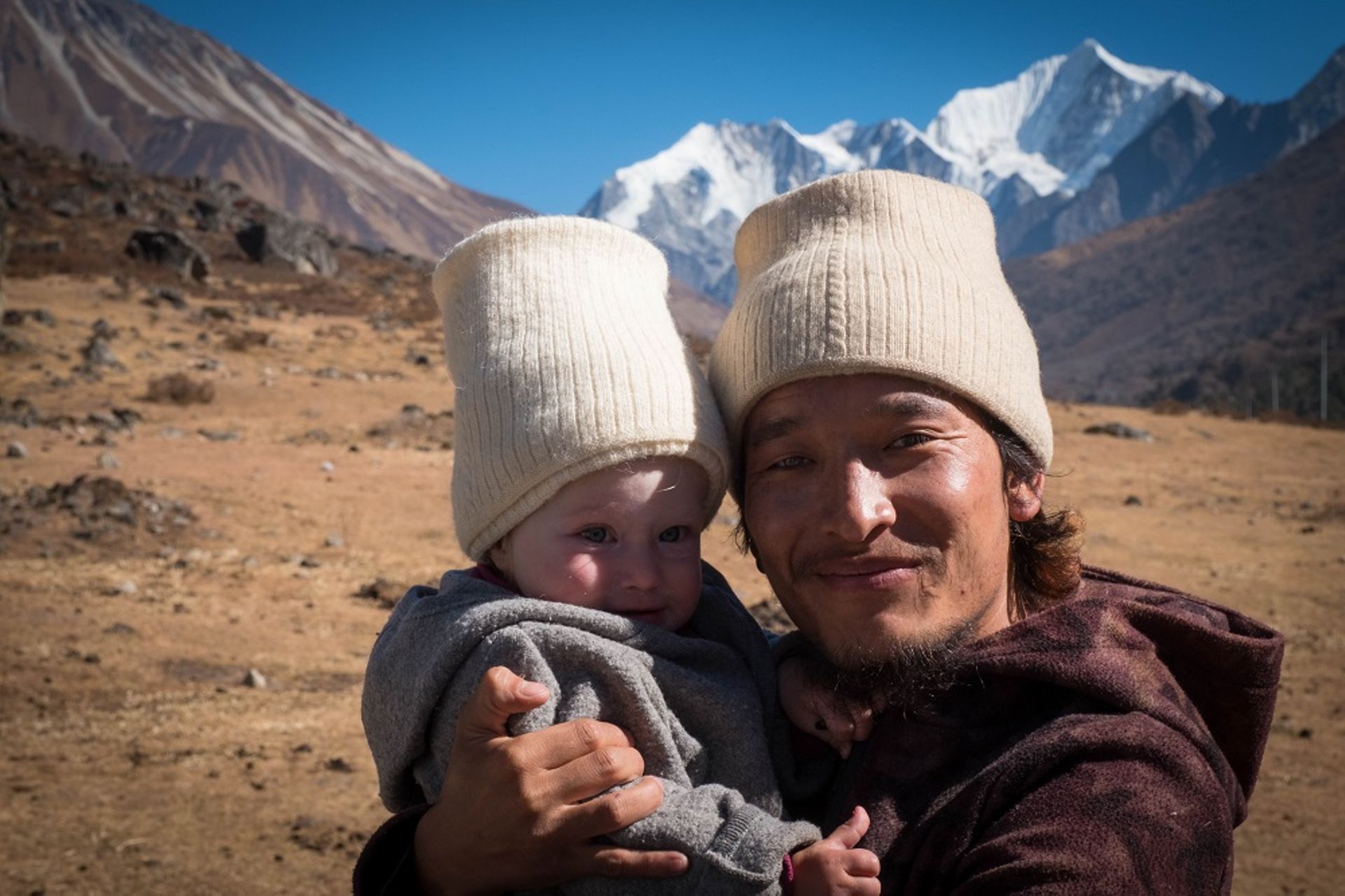
On the way back to Thulo Barkhu, we make acquaintances with the son of the yak farmer. From the lodge owner in Kyanjin Gompa, Antonia received this Tibetan cap made of yak and sheep wool as a gift - of course, hand-knitted.
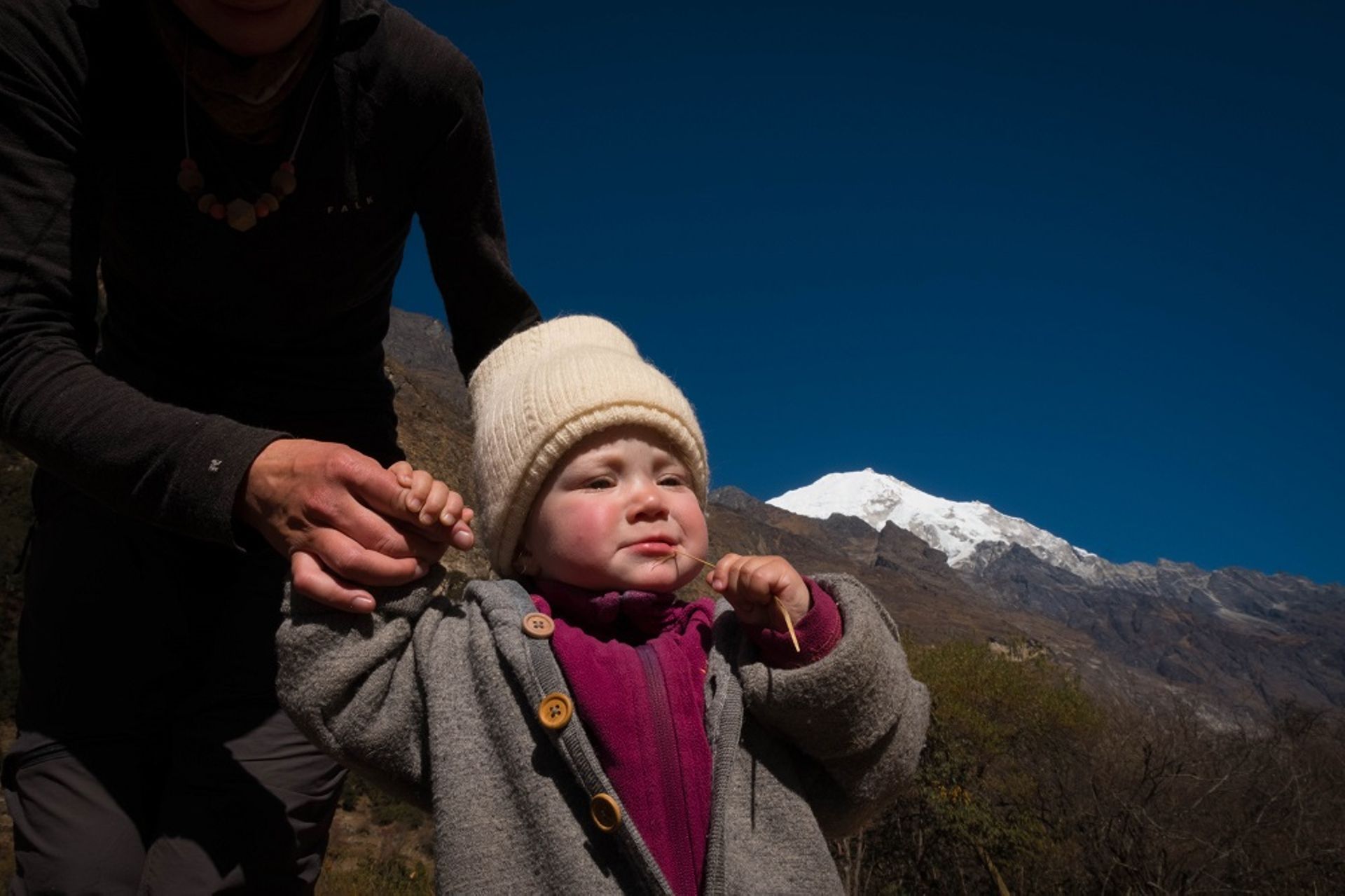
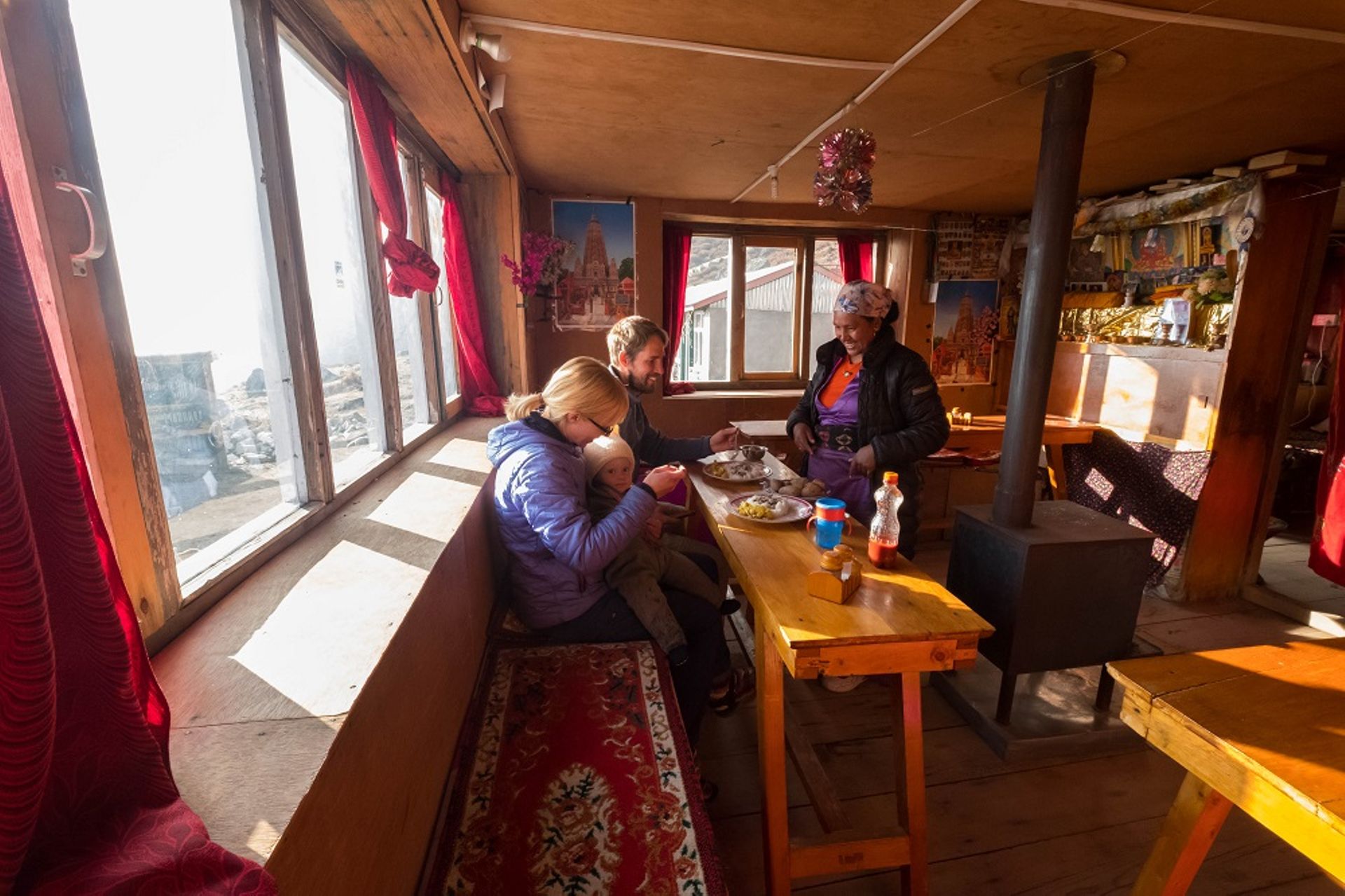
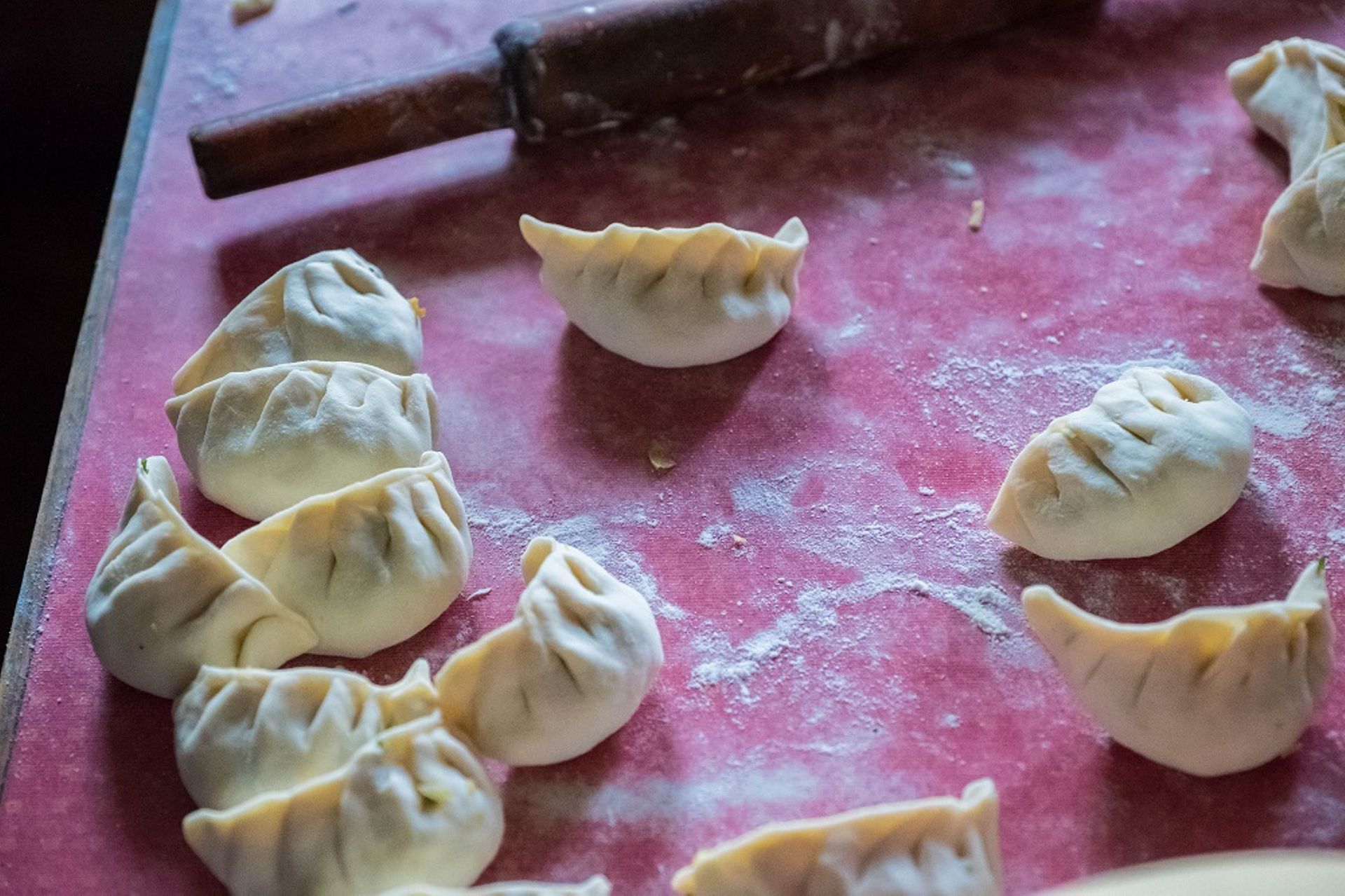
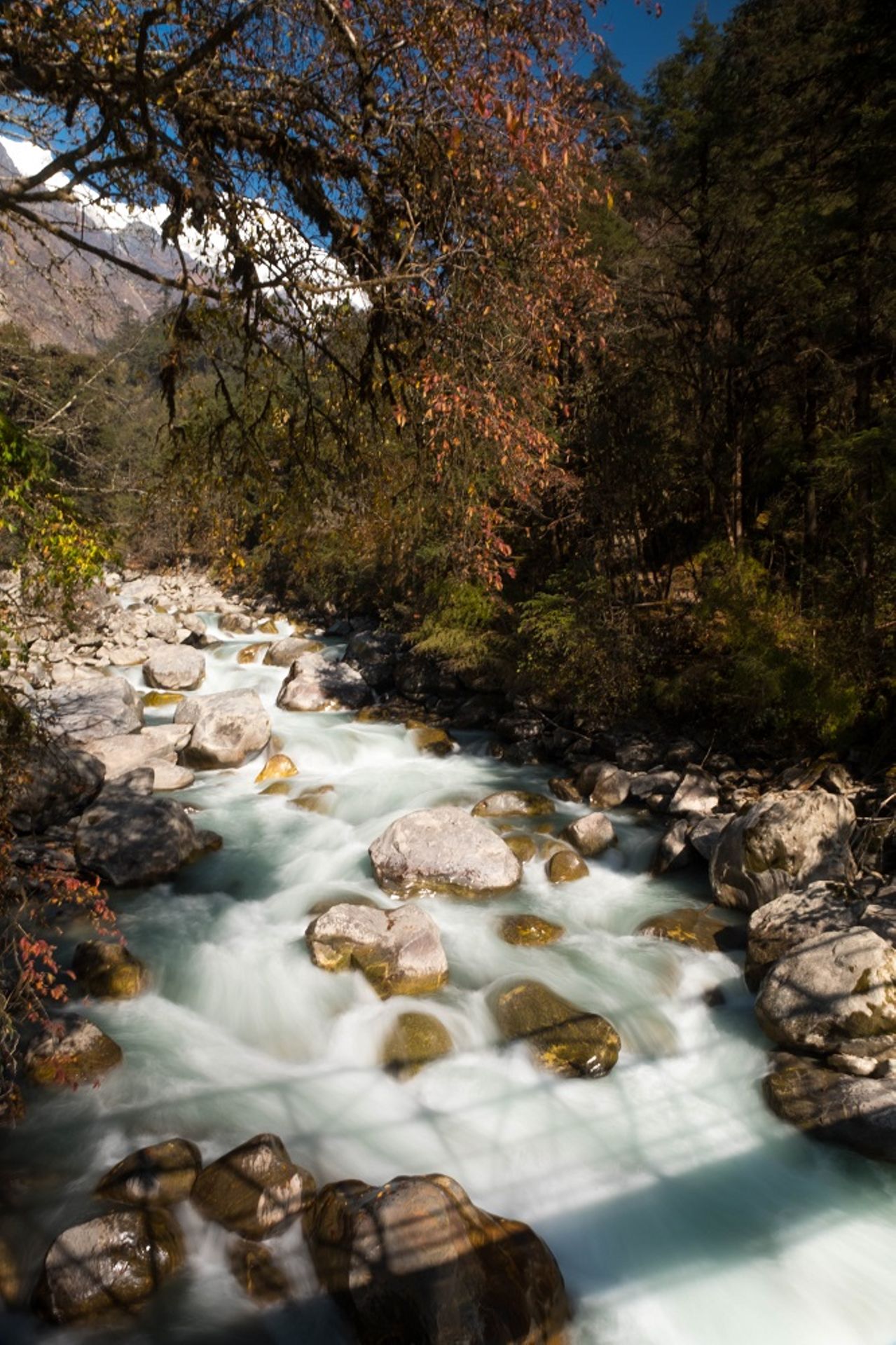 The Langtang Khola on its way to the Ganges. Also visible is the shadow of the 'DAV bridge'. After the earthquake, the German Alpine Club was significantly involved in the restoration of the hiking trail in the Langtang Valley.'
The Langtang Khola on its way to the Ganges. Also visible is the shadow of the 'DAV bridge'. After the earthquake, the German Alpine Club was significantly involved in the restoration of the hiking trail in the Langtang Valley.'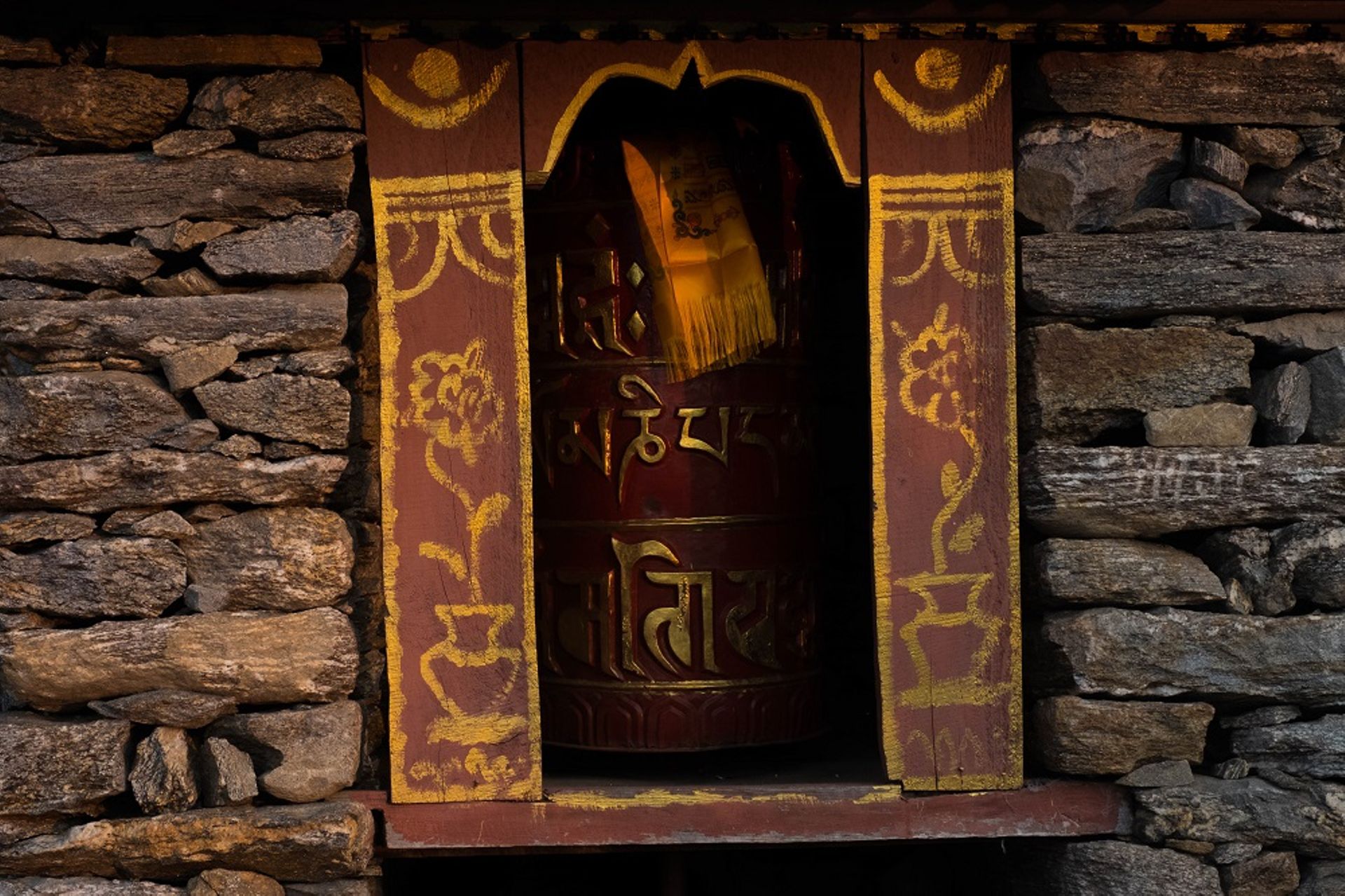
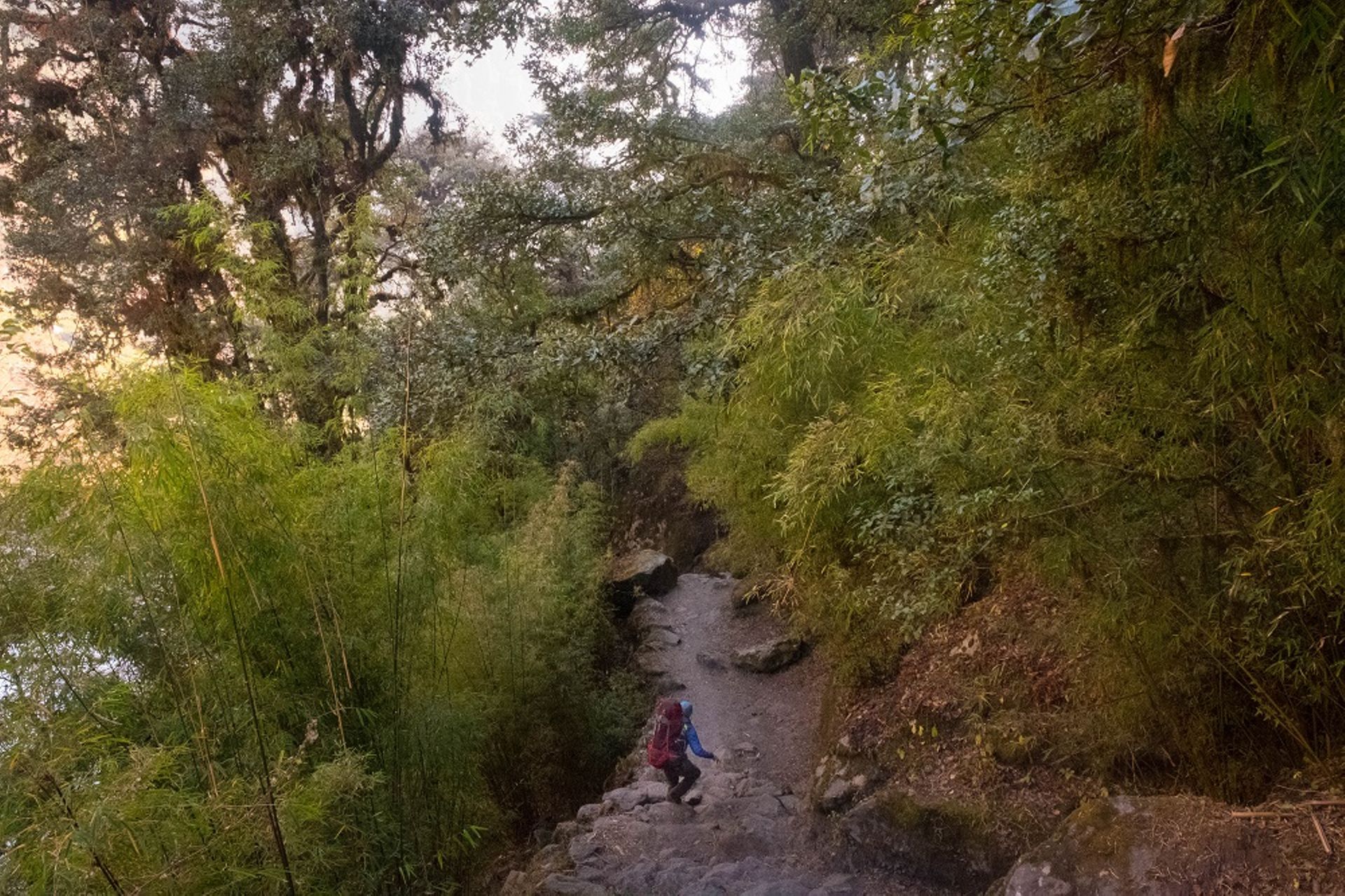
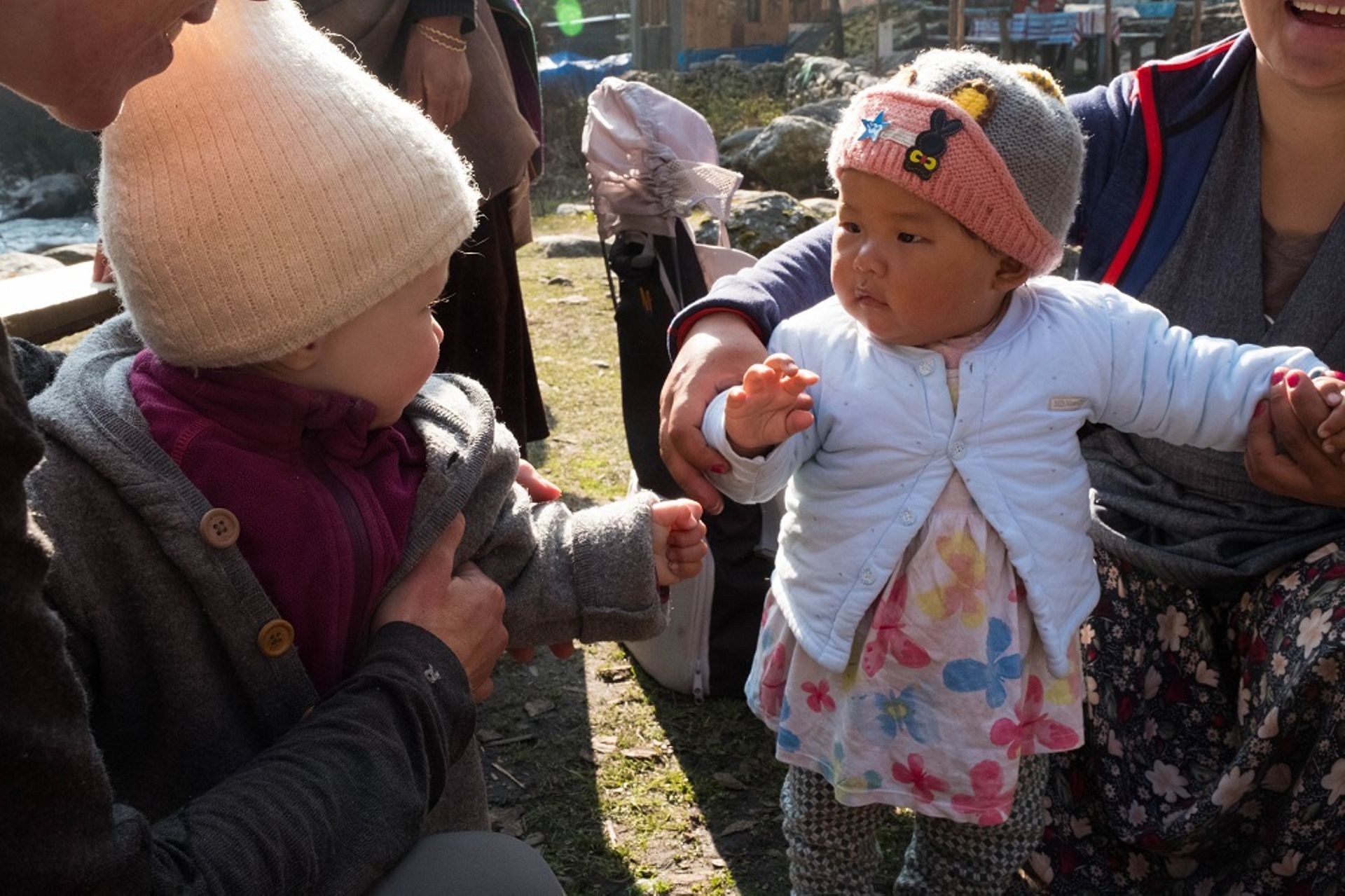
The Langtang Trek proved to be a great conclusion to our hike through the Himalayas. Now only a jeep ride separated us from our long-awaited hot shower in Kathmandu. The ride turned out to be more hair-raising than expected. We shake our heads in disbelief that this dilapidated and rugged road is supposed to be the only connecting road from Nepal to China at the moment. On the other hand, immense efforts are being made to build new roads instead of expanding the existing ones. The fact that many trucks and buses still roll over the existing road daily leaves us shaking our heads completely. Fortunately, Antonia once again proved to be tough and coped well with this bumpy ride – or as our driver said: just a little bit off road.
Our conclusion: The two months in the Himalayas were both challenging and exhausting, but with the right preparation, it is definitely doable and absolutely worthwhile, even with a small child.
Ngolisa ho Newsletter
Araba (1)
Harald
Schöner Bericht und tolle Bilder danke.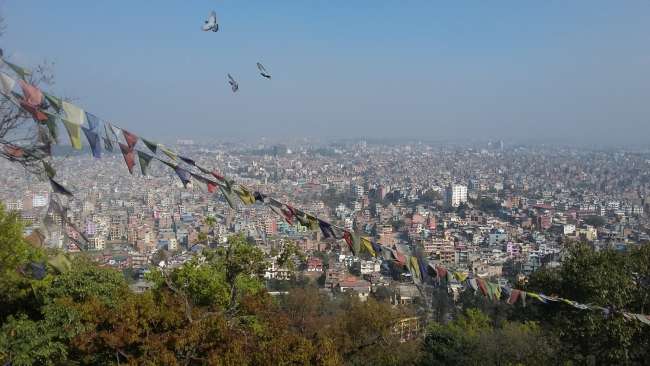
Litlaleho tsa maeto Nepal
